
Article Summary: Illinois Landmarks
Illinois Landmarks. More Than Just Parks has 20 incredible must-see sites for you to visit.
There’s so much more to this exciting place than the Fighting Illini. In this article, we’ll familiarize you with the incredible landmarks located in the Land of Lincoln.
We’ve got incredible places, iconic memorials, fascinating museums, epic monuments and so much more.
We’re going to give you our list of the Top 20 Landmarks In Illinois.
So, What Is A Landmark?
Well, it’s a place of “a special character or special historical or aesthetic interest or value as part of the development, heritage, or cultural characteristics of a city, state, or nation.”
Why visit these places? Because landmarks connect us to the past. Through visiting these wonderful places where history occurred we find our roots. It allows us to feel like we are a part of something much bigger than ourselves.
And, speaking of history, did I mention that I taught the subject? I spent a lifetime teaching about the history behind many of these amazing sites. Then I got to see them firsthand. And now I’m sharing the fascinating stories of these places with you. It doesn’t get any better than that!
So, without further ado, let’s dive in.
Table Of Contents
Illinois Landmarks
Some Fascinating Facts About Illinois
Here are some interesting facts about Illinois:
- Illinois is the fifth most populous state in the United States, with a population of over 12 million people.
- The state’s name comes from the Native American word “iliniwok,” which means “tribe of superior men.”
- Chicago, located in northeastern Illinois, is the third-largest city in the United States and is known for its skyscrapers, museums, and diverse culture.
- Illinois is home to many notable figures, including: former President Barack Obama, writer Ernest Hemingway, and comedian Richard Pryor.
- The Chicago River is the only river in the world that flows backward. In 1900, the river was reversed to prevent sewage from flowing into Lake Michigan, the city’s source of drinking water.
- The state is known as the “Prairie State” because it was once covered in grasslands that stretched for hundreds of miles.
- The world’s first skyscraper, the Home Insurance Building, was built in Chicago in 1885.
- The state is also known for its deep-dish pizza, Chicago-style hot dogs, and Italian beef sandwiches.
- The Illinois state flag features an eagle holding a banner that says “State Sovereignty, National Union” and a shield with a sun rising over Lake Michigan.
- The state is home to several prestigious universities, including: the University of Illinois at Urbana-Champaign, Northwestern University, and the University of Chicago.
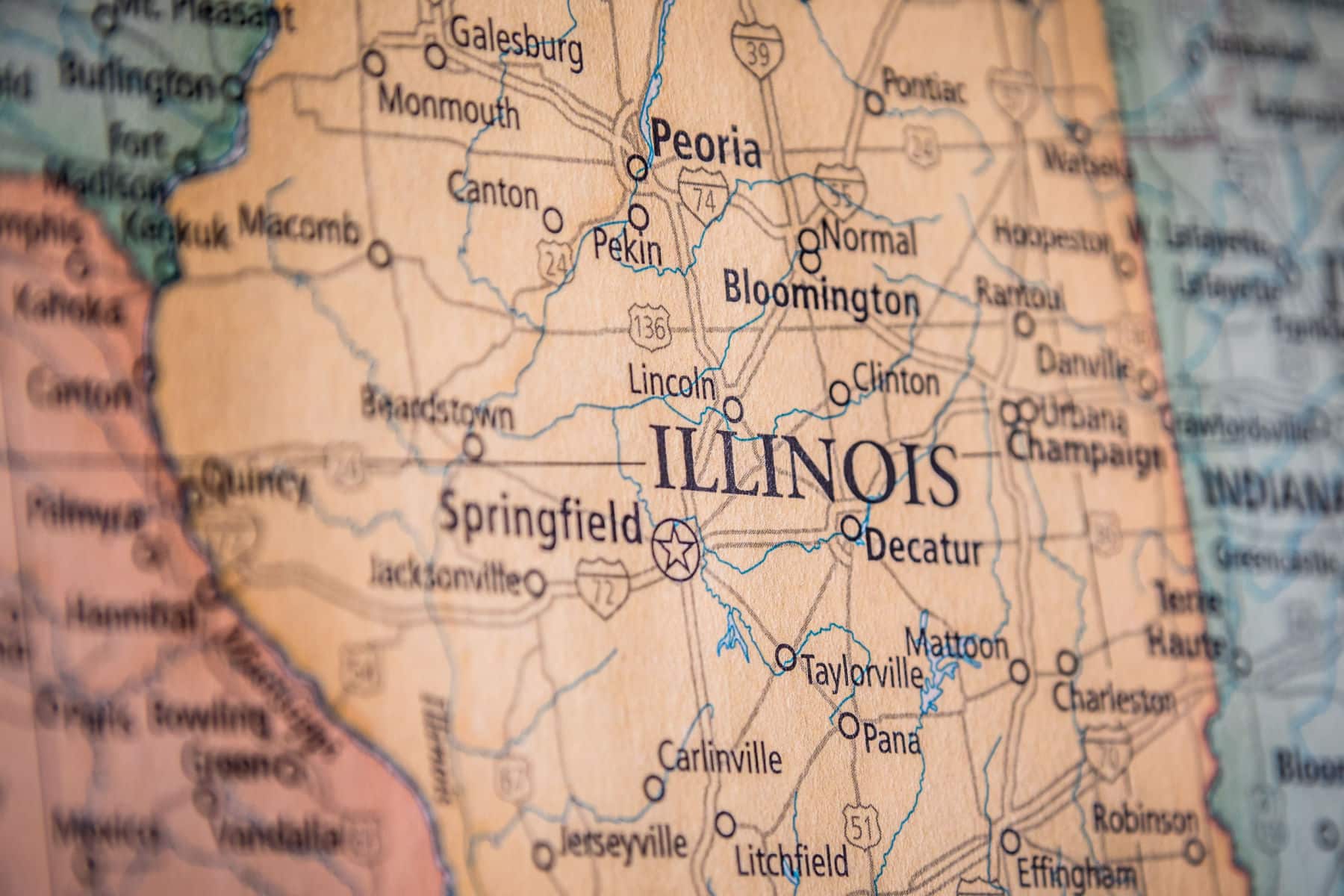
Top 20 Illinois Landmarks
20. Old State Capitol
We kick-off our list of the Best Landmarks in Illinois with a place which was the site of the presidential candidacy announcements by Abraham Lincoln in 1858 and Barack Obama in 2007. It was designated a National Historic Landmark in 1961, primarily for its association with Lincoln and his political rival Stephen Douglas.
At #20 on our list of the Best Illinois landmarks is the Old State Capitol.
The Old State Capitol in Illinois has a rich history as a center of political power and a symbol of democracy in the state. The building was constructed in 1839 to serve as the seat of government for the state of Illinois, and it remained in use as the state capitol until 1876.
It Was The Site Of Many Important Events
During its years as the state capitol, the Old State Capitol was the site of many important events in Illinois history. It was here that Abraham Lincoln gave his famous “House Divided” speech in 1858, which helped to launch his campaign for the U.S. Senate. It was also here that Lincoln lay in state after his assassination in 1865, and where his body was viewed by thousands of mourners.
In addition to its historical significance, the Old State Capitol is also an important example of Greek Revival architecture. The building was designed by architect John F. Rague, and features a grand central dome and columns modeled after the Parthenon in Athens.
After the state government moved to a new capitol building in 1876, the Old State Capitol was used for various purposes, including as a courthouse and as the headquarters of the Illinois Historical Society. In the 1960s, the building was restored to its original appearance and opened to the public as a museum.
Today, the Old State Capitol is a popular tourist attraction and a symbol of Illinois’ rich political and architectural heritage. Visitors can tour the building and learn about its history, as well as explore exhibits on Illinois’ role in the Civil War, the life of Abraham Lincoln, and other important topics.
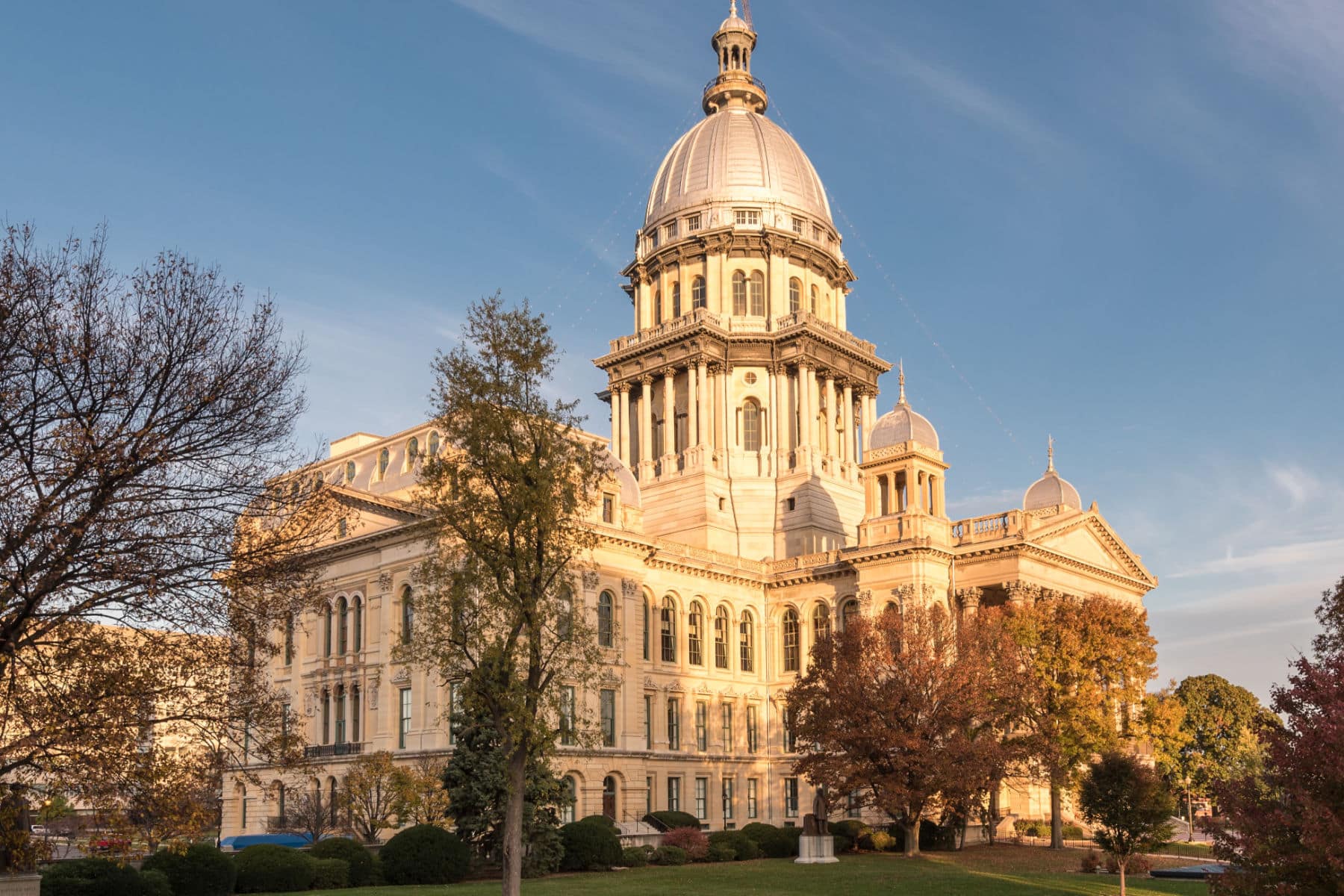
19. Principia College Historic District
Our next Illinois landmark was designated a National Historic Landmark in 1993, recognizing the architectural work of Bernard Maybeck.
At #19 on our list of the Best Illinois Landmarks is the Principia College Historic District.
The Principia College Historic District is located in Elsah, Illinois and is a historic district that includes the Principia College campus and adjacent residential neighborhoods. The history of the district dates back to the late 19th century, when Elsah was a small river town with a population of only a few hundred people.
In 1897, Mary Kimball Morgan founded Principia College, a Christian Science institution of higher learning, in Elsah. The college quickly became a major part of the community, and many faculty and staff members built homes in the surrounding area. The district includes a variety of architectural styles, including Queen Anne, Colonial Revival, and Craftsman.
The College Experienced Significant Growth & Expansion
During the early 20th century, the college experienced significant growth and expansion. In 1927, the college constructed a new campus on a hill overlooking the town. The new campus featured several new buildings, including the iconic Chapel, designed by architect Bernard Maybeck.
Throughout the 20th century, the college continued to expand and add new buildings to its campus. The district was listed on the National Register of Historic Places in 1985, recognizing its significance as an example of a small, rural college town and the development of the Christian Science Church in the Midwest.
Today, the Principia College Historic District remains an important part of Elsah’s history and a well-preserved example of small-town Midwestern architecture. The district includes several notable buildings, including the Chapel, and continues to serve as a center of education and community for both the college and the town.
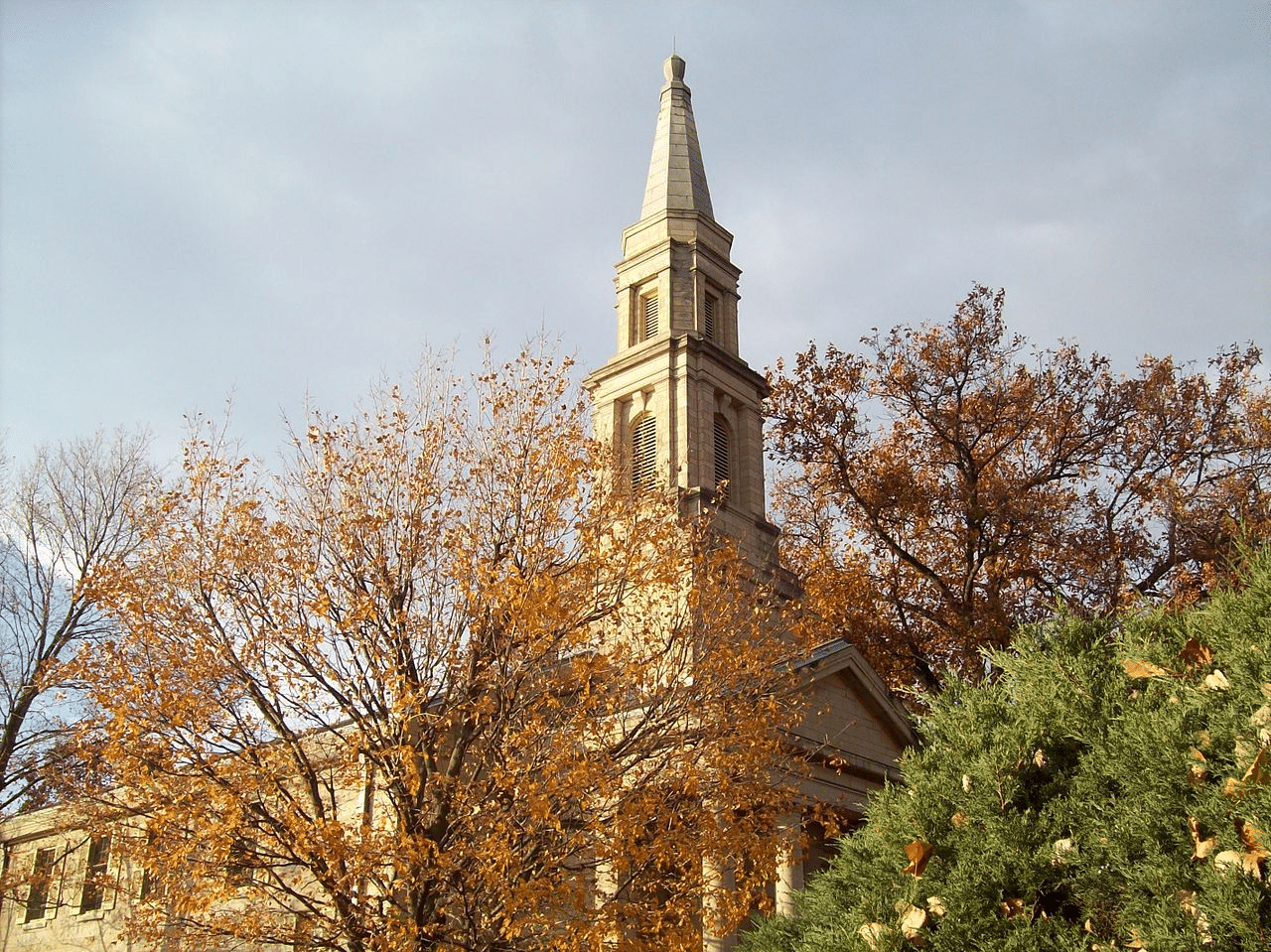
Bell tower of the Chapel — in the Principia College Historic District, Jersey County, Illinois. (Courtesy of Wikimedia Commons)
18. DuSable Bridge
Our next Illinois landmark is an engineering marvel. When it was first constructed, it was the only double-deck bridge built with highways on both levels.
At #18 on our list of the Best Illinois Landmarks is the DuSable Bridge.
The DuSable Bridge, also known as the Michigan Avenue Bridge, spans the Chicago River and connects North Michigan Avenue with the Loop area of the city. The history of the bridge dates back to the early 20th century when the city of Chicago was rapidly growing and expanding.
The original Michigan Avenue Bridge was constructed in 1869 and was a wooden swing bridge. It was replaced in 1891 with a steel bridge that had a turntable at the center to allow for the passage of ships along the river. This bridge was further upgraded in 1920 with a double-decker design, with the upper level carrying northbound vehicular traffic and the lower level carrying southbound traffic.
Chicago Embarked On A Major Public Works Project
In the 1930s, the city of Chicago embarked on a major public works project, known as the Wacker Drive Reconstruction Project, which aimed to improve the city’s transportation infrastructure and alleviate traffic congestion. As part of this project, the Michigan Avenue Bridge was redesigned and rebuilt between 1928 and 1931.
The new bridge was named after Jean Baptiste Point DuSable, a Haitian-French fur trader who is often considered the founder of Chicago. The DuSable Bridge was designed by engineer Thomas Gill and architect Edward Bennett, who also designed the Michigan Avenue Viaduct and the famous Wrigley Building.
The DuSable Bridge was constructed using reinforced concrete and features Art Deco design elements, including fluted piers and stylized reliefs depicting Native American figures. The bridge also features four large bronze sculptures, designed by artist James Earle Fraser, which depict allegorical representations of various themes related to the city’s history and culture.
Today, the DuSable Bridge remains an iconic landmark in downtown Chicago and an important part of the city’s transportation infrastructure. It is a popular destination for tourists and locals alike, offering stunning views of the Chicago River and the city skyline.
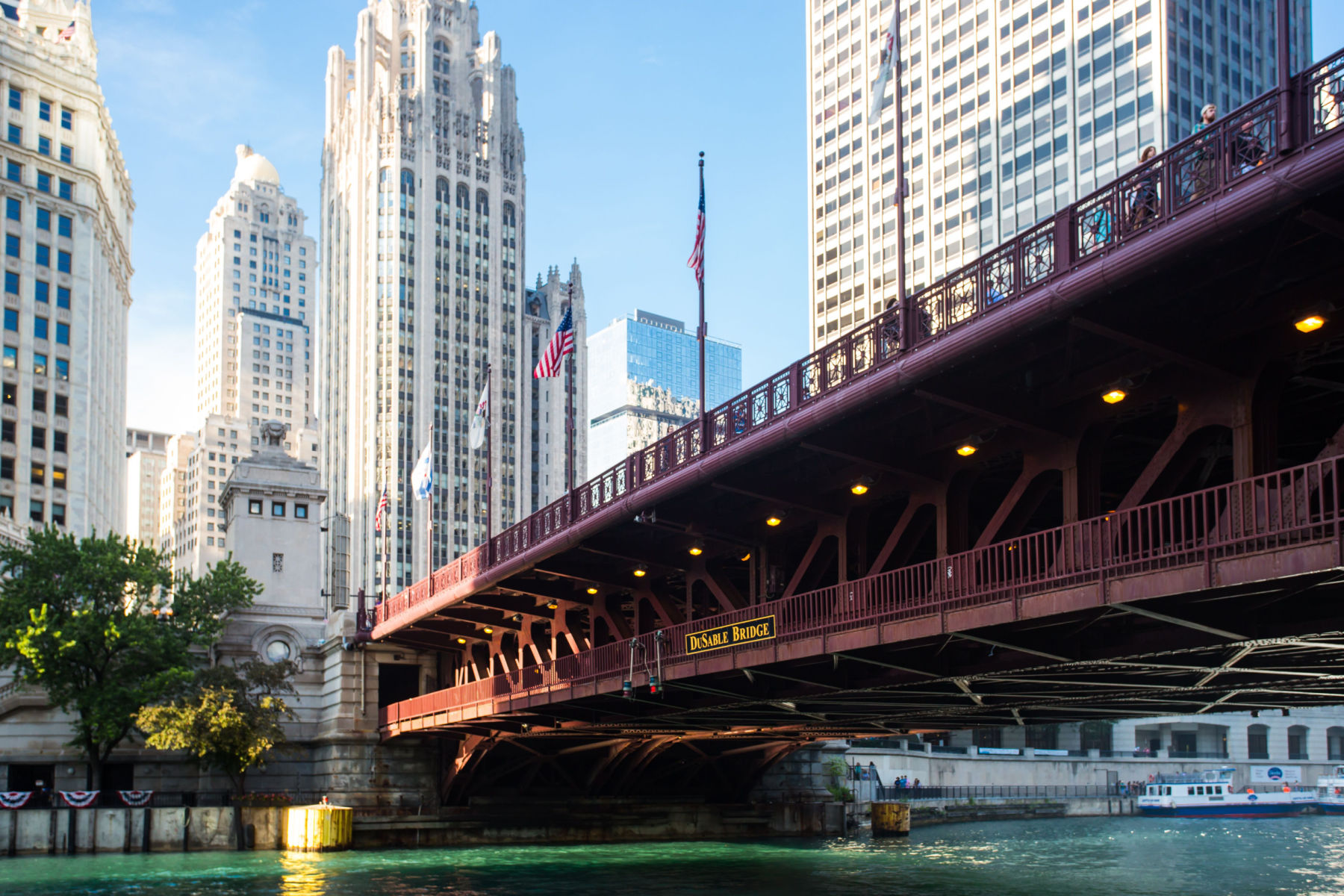
17. The Field Museum of Natural History
Our next Illinois landmark is a revered Chicago institution and one of the world’s great museums of natural history. Their immersive exhibits explore everything from ancient cultures to the latest scientific discoveries, drawing from an astounding collection of more than 24 million objects.
At #17 on our list of the Best Illinois Landmarks is the The Field Museum of Natural History.
The Field Museum of Natural History is dedicated to the study and preservation of the natural world. The museum was founded in 1893, during the World’s Columbian Exposition, and has since become one of the largest natural history museums in the world.
The idea for the museum was conceived by Marshall Field, a wealthy Chicago businessman who was passionate about natural history and science. Field assembled a team of scientists, collectors, and curators to help him create a museum that would showcase the natural wonders of the world.
The museum’s original collection was built using specimens and artifacts from the World’s Columbian Exposition, as well as from Field’s personal collection. The museum’s first building, which is still in use today, was designed by architects Daniel Burnham and Charles Atwood and opened to the public in 1894.
The Museum Has Grown To Include More Than 40 Million Specimens & Artifacts
Over the years, the museum’s collection has grown to include more than 40 million specimens and artifacts, including some of the most famous and iconic specimens in the world, such as Sue, the largest and most complete T-Rex skeleton ever discovered.
In addition to its collections, the Field Museum has also been instrumental in the advancement of scientific research and education. The museum has a dedicated research department that conducts research in a variety of scientific fields, including biology, anthropology, and geology. The museum’s educational programs and exhibits are designed to engage visitors of all ages and inspire a greater appreciation for the natural world.
Today, the Field Museum remains one of the most popular tourist attractions in Chicago, drawing millions of visitors from around the world each year. Its collections and research continue to contribute to our understanding of the natural world and the history of life on Earth.
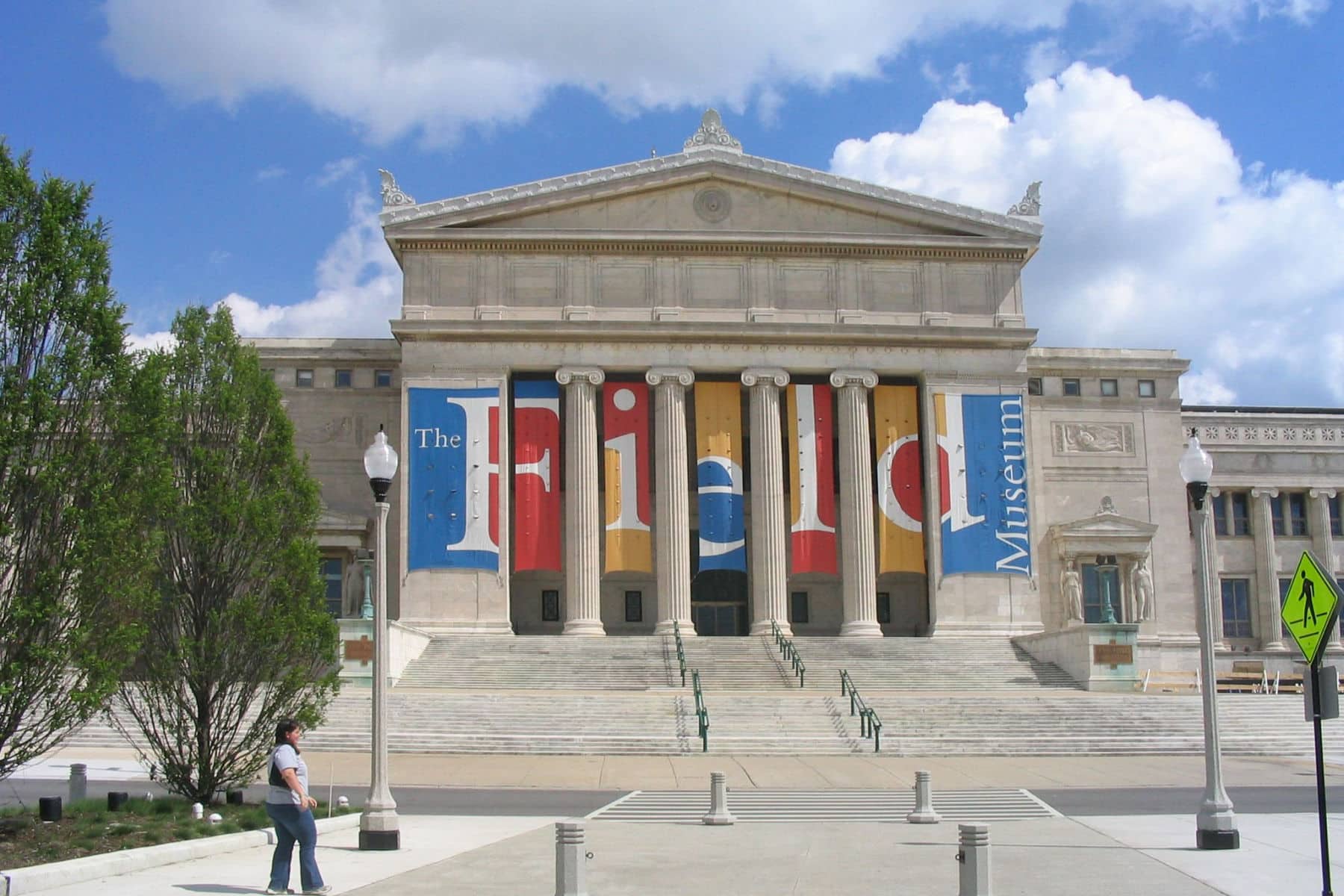
16. University of Illinois Arboretum
Our next Illinois landmark has 160 acres of land to provide open green vistas and quiet wooded corners with many well-kept landscapes & gardenscapes to explore & enjoy.
At #16 on our list of the Best Illinois Landmarks is the University of Illinois Arboretum.
The University of Illinois Arboretum is a public garden and research facility located on the campus of the University of Illinois in Urbana-Champaign, Illinois. The arboretum was established in 2001 and covers 160 acres of land.
The arboretum is home to a diverse collection of plants, including over 2,500 trees and shrubs, 12,000 perennials, and more than 200,000 bulbs. The collection represents a wide range of plant species, including native Illinois plants, as well as species from around the world.
Several Specialized Gardens
The arboretum also features several specialized gardens, including the Idea Garden, which showcases sustainable gardening practices, and the Japan House Garden, which features traditional Japanese garden design and landscaping. In addition to its gardens, the arboretum includes several natural areas, including wetlands and prairies, that provide habitat for a variety of plant and animal species.
The University of Illinois Arboretum is not only a public garden but also a research facility. Researchers from the university’s Department of Crop Sciences and Department of Natural Resources and Environmental Sciences use the arboretum to conduct research on topics such as plant breeding, biodiversity, and conservation.
The arboretum also offers educational programs and events for visitors of all ages, including guided tours, workshops, and lectures. The goal of these programs is to promote public understanding of the importance of plants and the role they play in sustaining the environment.
The University of Illinois Arboretum is open to the public year-round and is free to visit. It provides visitors with a peaceful and serene environment to explore the beauty and diversity of the natural world while also serving as an important research facility and educational resource for the university and the broader community.
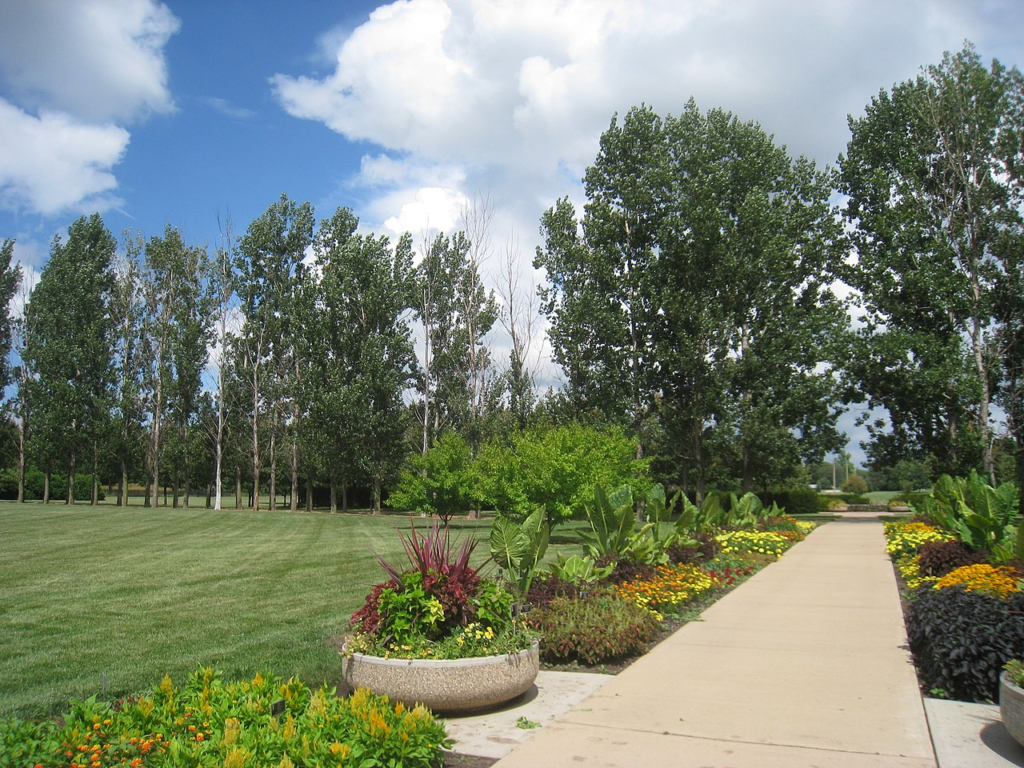
University of Illinois Arboretum, University of Illinois at Urbana-Champaign, Urbana, Illinois | Courtesy of Wikimedia Commons
Top 15 Illinois Landmarks
15. Rock Island Arsenal Museum
We’re on to our Top 15 Illinois landmarks. Our next Illinois landmark is a nationally recognized for its large and impressive small arms collection. Over twelve hundred U.S., foreign, civilian, and military small arms are on permanent display.
At #15 on our list of the Best Illinois Landmarks is the Rock Island Arsenal Museum.
The Rock Island Arsenal Museum is a museum located on the grounds of the Rock Island Arsenal, a military installation in Rock Island, Illinois. The museum is dedicated to preserving the history of the arsenal, which has played an important role in American military history since the early 19th century.
The Rock Island Arsenal was established in 1816, when the United States government purchased a small island in the Mississippi River and began constructing a military facility. The arsenal played a significant role in the Indian Wars of the 19th century, as well as in the Civil War and the two World Wars.

Rock Island Arsenal Museum | Courtesy of Wikimedia Commons
One Of The Oldest Military Museums In The U.S.
The museum was founded in 1905 and is one of the oldest military museums in the United States. The museum’s collection includes a wide range of artifacts and exhibits related to the history of the arsenal, including weapons, uniforms, equipment, and other military memorabilia.
One of the highlights of the museum’s collection is the Arsenal’s first cannon, a 6-pounder field gun that was cast in 1835. The cannon was used in several conflicts, including the Mexican-American War and the Civil War.
The museum also features exhibits on the role of the Rock Island Arsenal in World War I and World War II, as well as displays on the history of the Army Corps of Engineers and the Mississippi River Commission, both of which have been based at the arsenal.
In addition to its exhibits, the museum also offers educational programs and guided tours for visitors of all ages. The museum’s goal is to provide visitors with a greater understanding of the important role that the Rock Island Arsenal has played in American military history and its continued importance in the present day.

Rock Island Arsenal M101A1 howitzer | Courtesy of Wikimedia Commons
14. John C. Flanagan House Museum
Our next Illinois landmark is a historic house located in the city of Springfield, Illinois, that was built in 1874. It was originally owned by John C. Flanagan, a local businessman and politician who played an important role in the development of the city.
At #14 on our list of the Best Illinois Landmarks is the John C. Flanagan House Museum.
It is believed that Abraham Lincoln was once a guest in the home during the Lincoln-Douglas Debates from 1854 to 1860.
Today, the John C. Flanagan House Museum is owned and operated by the Kalamazoo Historical Society and is open to the public for tours. The museum offers visitors the opportunity to step back in time and experience life as it was in the late 19th century.
The museum features period furnishings, including Victorian-era furniture, decorative arts, and clothing. Visitors can also explore the museum’s gardens, which have been restored to their original Victorian-era design.
In addition to offering tours of the house, the museum also hosts a variety of events throughout the year, including lectures, workshops, and other educational programs related to local history and culture.
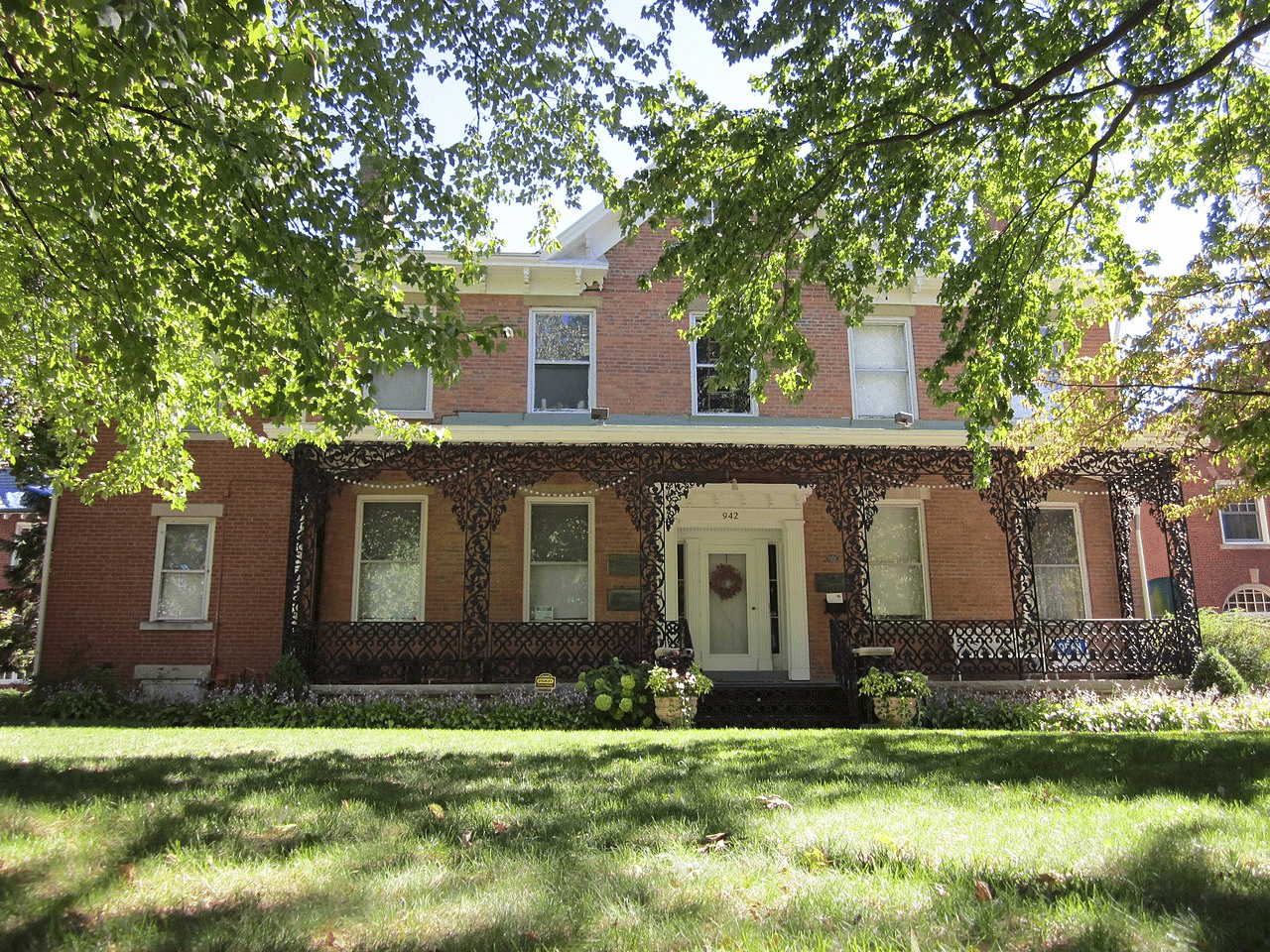
13. Frank Lloyd Wright Home and Studio
We move from a historic home to a place which celebrates one of the most important architects of the 20th century.
At #9 on our list of the Best Historic Sites In Illinois is the Frank Lloyd Wright Home and Studio.
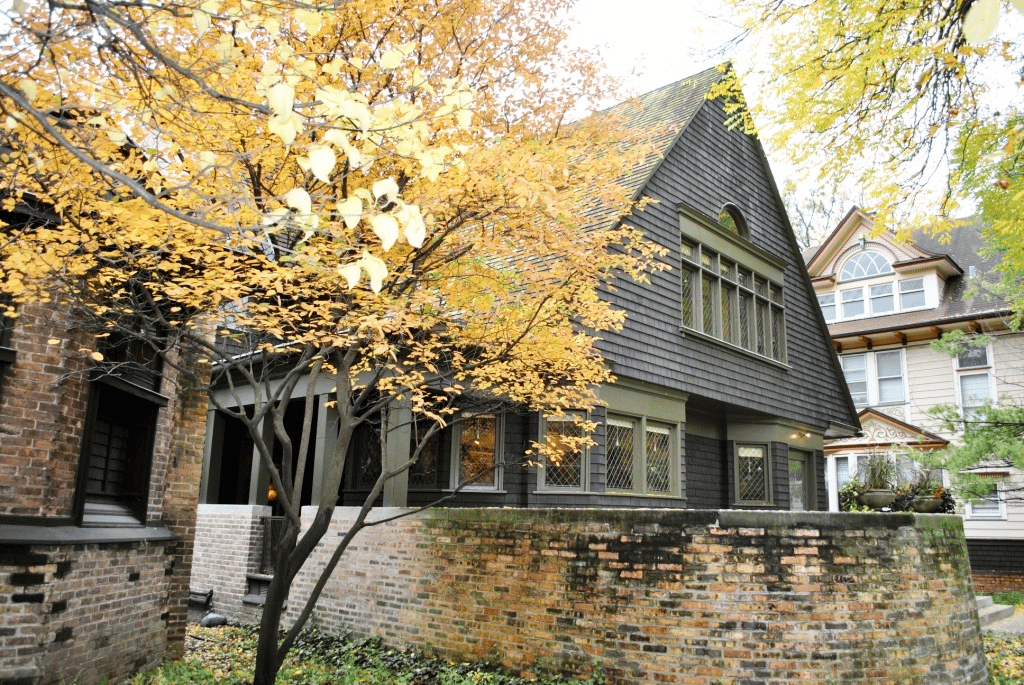
Frank Lloyd Wright
Frank Lloyd Wright (1867-1959) was an American architect, interior designer, writer, and educator who is widely considered to be one of the most significant and influential architects of the 20th century.
He was known for his organic architecture style, which emphasized the integration of buildings into their natural surroundings and the use of natural materials.
Wright designed over 1,000 structures during his career, including homes, offices, churches, schools, and museums. Some of his most famous works include: the Robie House in Chicago, the Fallingwater House in Pennsylvania, and the Guggenheim Museum in New York City.
Wright was also known for his innovations in construction techniques and materials, including the use of reinforced concrete, steel framing, and glass curtain walls. He was a proponent of sustainable design and believed that buildings should be designed to be in harmony with their environment and function in a way that was efficient and sustainable.
In addition to his work as an architect, Wright was also a prolific writer and educator, publishing numerous books and articles on architecture and design. He founded the Taliesin Fellowship, a school and community for architects and designers, which continues to operate today as the Frank Lloyd Wright Foundation.
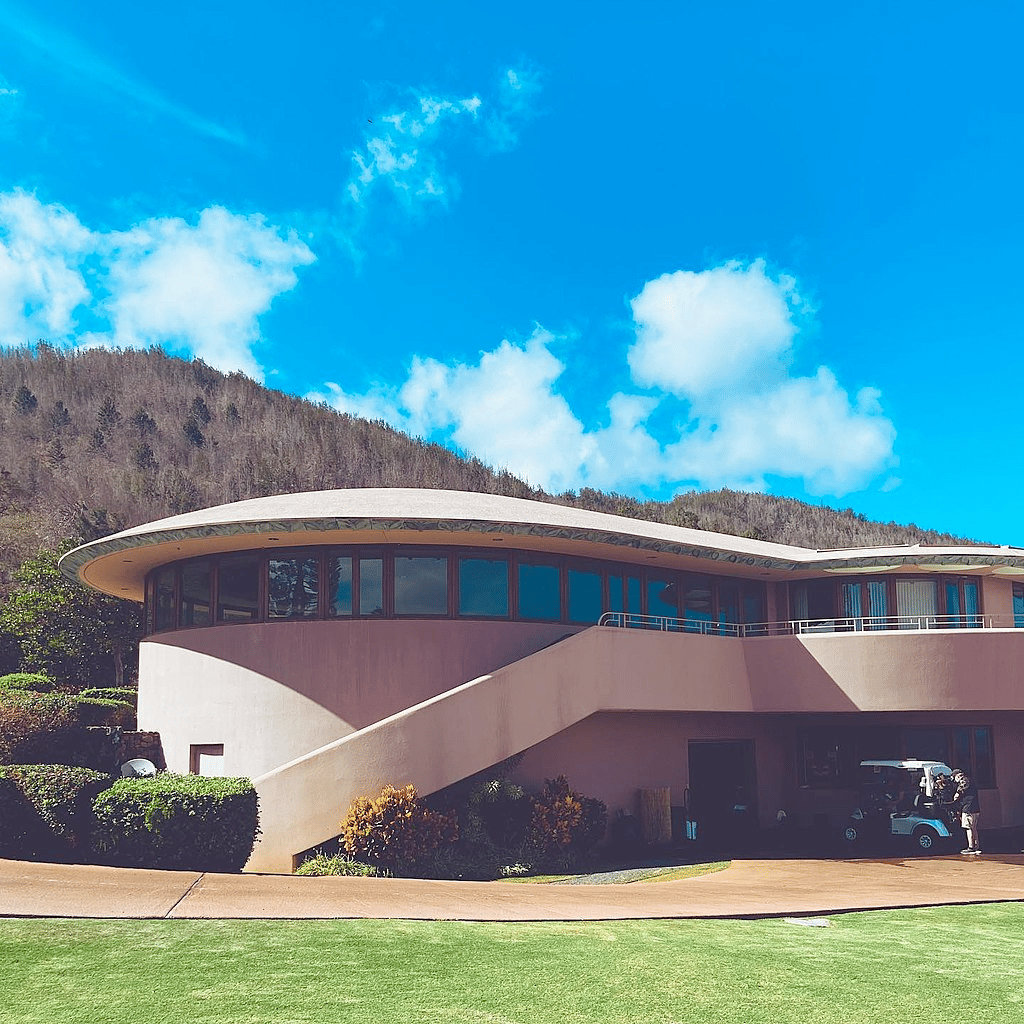
12. Garfield Park Conservatory
Our next Illinois landmark is one of the largest and most stunning botanical conservatories in the nation. Often referred to as “landscape art under glass,” the Conservatory showcases thousands of plant species from around the world throughout eight indoor display gardens.
At #12 on our list of the Best Landmarks in Illinois is the Garfield Park Conservatory.
The Garfield Park Conservatory was designed by landscape architect Jens Jensen and opened to the public in 1908.
The conservatory covers 4.5 acres and features a variety of themed gardens and plant collections, including a palm house, fern room, and desert house. The conservatory also includes several outdoor gardens and a lily pond.
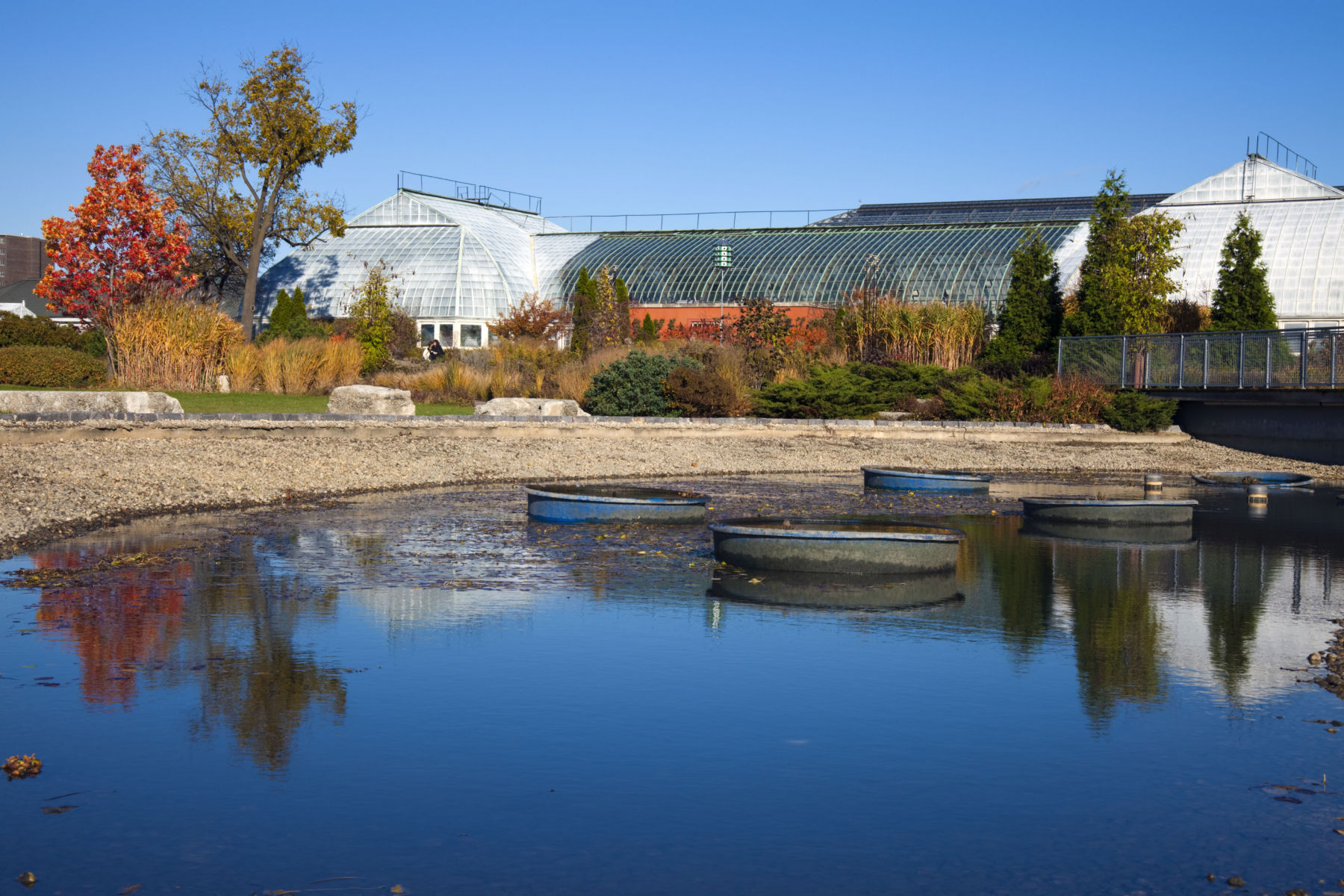
The History Of The Garfield Park Conservatory
The history of the Garfield Park Conservatory dates back to the early 20th century, when the city of Chicago was experiencing a period of rapid growth and development. In 1905, a group of community leaders proposed the construction of a large public conservatory to serve as a center for education and recreation.
Jens Jensen, a prominent landscape architect who had already designed several parks and gardens in Chicago, was hired to design the conservatory. Jensen’s design incorporated elements of the Prairie School style of architecture, which emphasized simplicity, harmony with the natural environment, and the use of local materials.
Construction on the conservatory began in 1906 and was completed in 1908. The conservatory quickly became a popular destination for Chicago residents and visitors alike, who came to marvel at its collection of rare and exotic plants and enjoy its serene atmosphere.
Over the years, the Garfield Park Conservatory has undergone several renovations and upgrades to keep it up-to-date and relevant to the needs of the community.
Today, the conservatory remains one of the most popular tourist attractions in Chicago and is recognized as a national historic landmark. Its collection of plants and gardens continue to inspire and educate visitors of all ages and backgrounds.
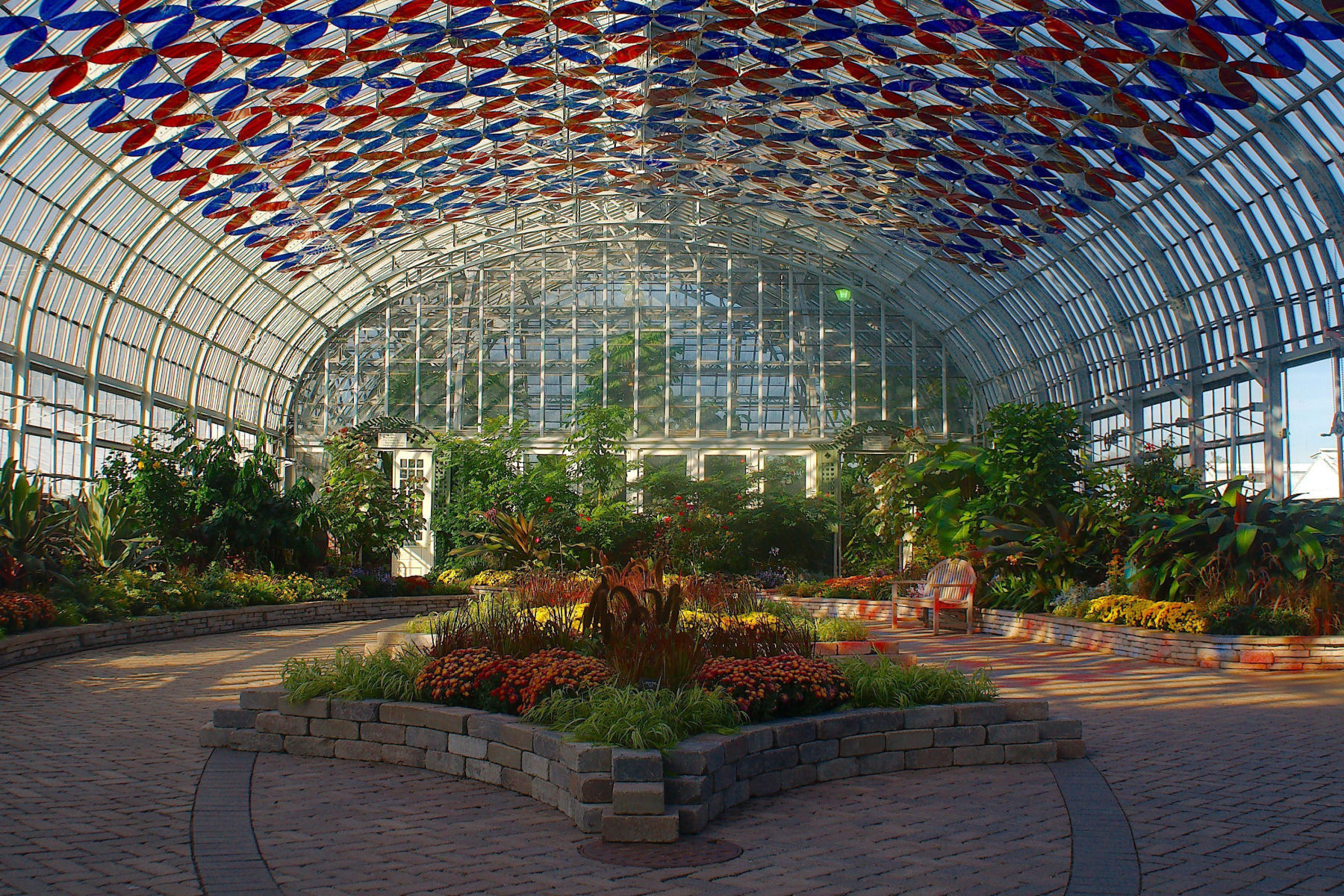
11. George Herbert Jones Laboratory
Our next Illinois landmark is most famous as the site where Glenn Seaborg and his colleagues first weighed a sample of plutonium. At #11 on our list of the Best Illinois Landmarks is the George Herbert Jones Laboratory.
The George Herbert Jones Laboratory is a building located on the campus of the University of Chicago in Chicago, Illinois. The laboratory was designed by the architectural firm of Holabird & Root and opened in 1929.
The building was named after George Herbert Jones, who served as the president of the University of Chicago from 1909 to 1923. Jones was a strong supporter of scientific research and was instrumental in the creation of the university’s physics department.
The George Herbert Jones Laboratory was designed to house the university’s growing physics department, which had become one of the most prestigious in the world. The laboratory was one of the first buildings in the United States to be specifically designed for the study of atomic and subatomic physics.
The Laboratory Played An Important Role In Atomic Research
The laboratory was equipped with state-of-the-art facilities, including a cyclotron, a device used to accelerate particles for atomic research. The laboratory also housed several other important pieces of equipment, including a linear accelerator and a Van de Graaff generator.
Over the years, the George Herbert Jones Laboratory has been the site of many groundbreaking discoveries in the field of physics. Some of the most notable discoveries made at the laboratory include the first demonstration of nuclear magnetic resonance, the development of the first linear accelerator, and the discovery of the antiproton.
Today, the George Herbert Jones Laboratory continues to be an important center for scientific research and education. The building has undergone several renovations and upgrades to keep it up-to-date with the latest advances in technology, and it remains a symbol of the University of Chicago’s commitment to scientific inquiry and discovery.

The Top 10 Illinois Landmarks
10. Nauvoo Historic District
We’re on to our Top 10 Illinois landmarks. Our next Illinois landmark contains 1,100 acres of authentically restored homes and shops, including Brigham Young’s home. The historic district contains streets, 18 restored houses, shops, and a visitor center.
At #10 on our list of the Best Illinois Landmarks is the Nauvoo Historic District.
The history of the Nauvoo Historic District begins in 1839, when the church purchased a large tract of land in Nauvoo and began building a settlement there. Over the next few years, the settlement grew rapidly, with thousands of church members flocking to Nauvoo from all over the world.
During this time, many important buildings were constructed in Nauvoo, including the Nauvoo Temple, the Nauvoo House Hotel, and the Red Brick Store, which served as the church’s headquarters. These buildings were designed to be grand and impressive, reflecting the church’s vision of itself as a powerful and influential organization.
Tensions Began To Rise
However, tensions between the church and local residents began to rise in the late 1840s, and in 1846, church leaders announced that they would be leaving Nauvoo and heading west to the Salt Lake Valley. The exodus was a difficult and challenging journey, but it ultimately led to the establishment of the church’s new home in Utah.
After the church’s departure, many of the buildings in Nauvoo fell into disrepair or were destroyed. However, in the early 20th century, efforts began to restore the historic district and preserve its buildings for future generations.
Today, the Nauvoo Historic District is a popular tourist destination, with thousands of visitors each year coming to see the historic buildings and learn about the city’s unique and fascinating history.
The district is a testament to the enduring legacy of the Church of Jesus Christ of Latter-day Saints and the important role that Nauvoo played in the church’s early history.
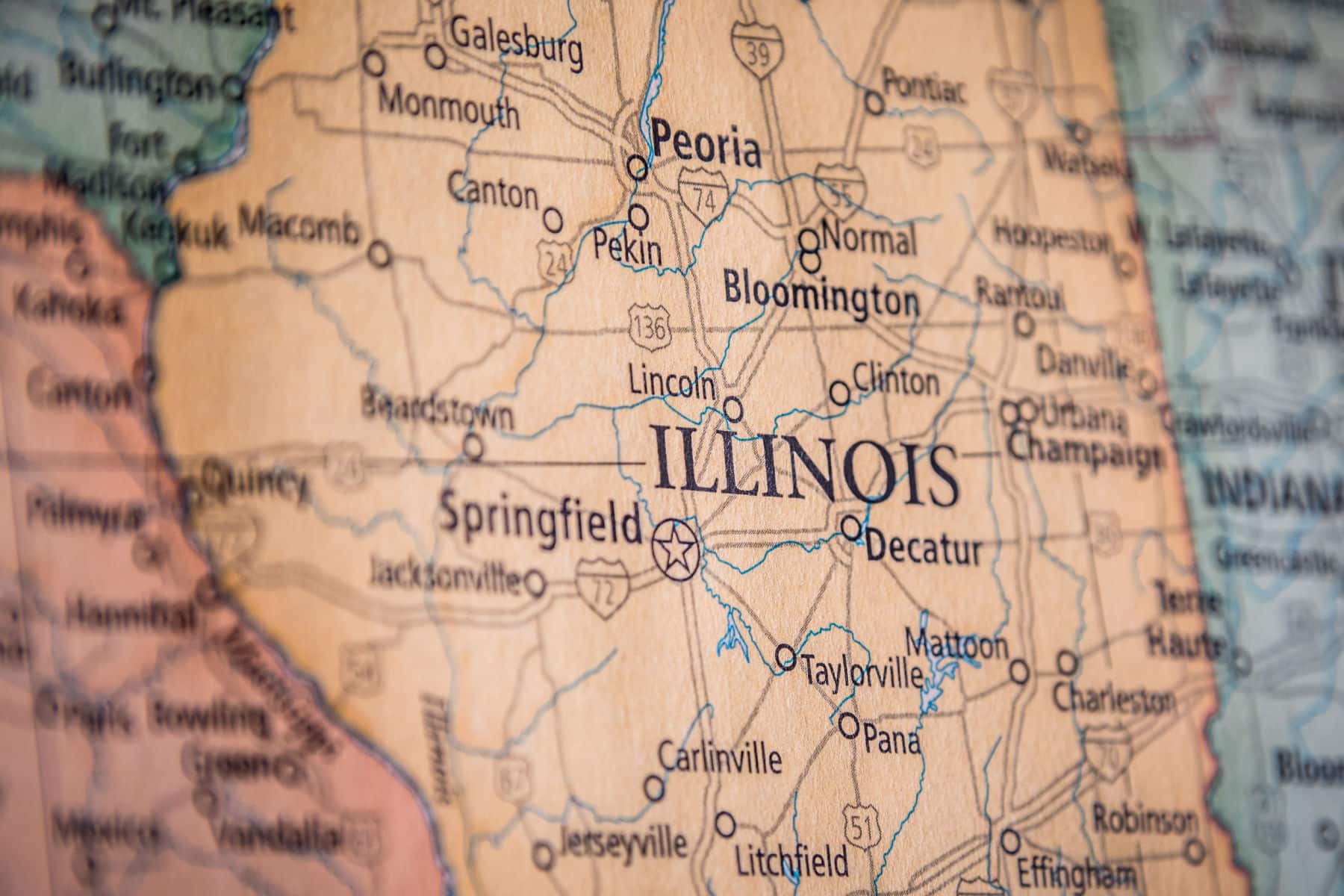
9. The Black Hawk State Historic Site
Our next Illinois landmark was considered one of the largest Native American villages in North America. The collection includes winter and summer houses used by the tribes, and dioramas that depict the lives of the people who lived here from 1750 to 1830.
At #9 on our list of the Best Illinois Landmarks is the Black Hawk State Historic Site.
The Black Hawk State Historic Site is a significant historical and natural landmark located in Rock Island, Illinois. It is named after Chief Black Hawk, a prominent leader of the Sauk Native American tribe in the early 19th century.
Covering an area of approximately 208 acres (84 hectares), the Black Hawk State Historic Site offers a blend of rich history, cultural significance, and natural beauty. The site is situated along the scenic Rock River, providing stunning views and a tranquil atmosphere.
It’s Home To The Historic Watch Tower Lodge
The park is home to the historic Watch Tower Lodge, which was constructed by the Civilian Conservation Corps in the 1930s. This lodge serves as a visitor center, housing exhibits that showcase the history of the area and its Native American heritage.
Visitors can explore the museum displays, learn about the life and legacy of Chief Black Hawk, and gain insights into the region’s early settlement.
One of the main attractions of the site is the reconstructed village of Sauk and Meskwaki Native Americans. This replica village offers a glimpse into the daily lives, customs, and traditions of these indigenous peoples. Visitors can explore the lodges, traditional gardens, and other structures, gaining a deeper understanding of the Native American culture that once thrived in the region.
Nature enthusiasts will appreciate the site’s natural beauty and diverse ecosystems. Black Hawk State Historic Site features several nature trails that wind through lush forests, prairies, and along the riverbank. These trails provide opportunities for hiking, birdwatching, and wildlife observation. The park is home to various species of plants, animals, and migratory birds, making it a haven for nature lovers.
In addition to its historical and natural attractions, the Black Hawk State Historic Site offers recreational facilities such as picnic areas, playgrounds, and fishing spots. It is a popular destination for family outings, school field trips, and outdoor enthusiasts looking to connect with nature and history.
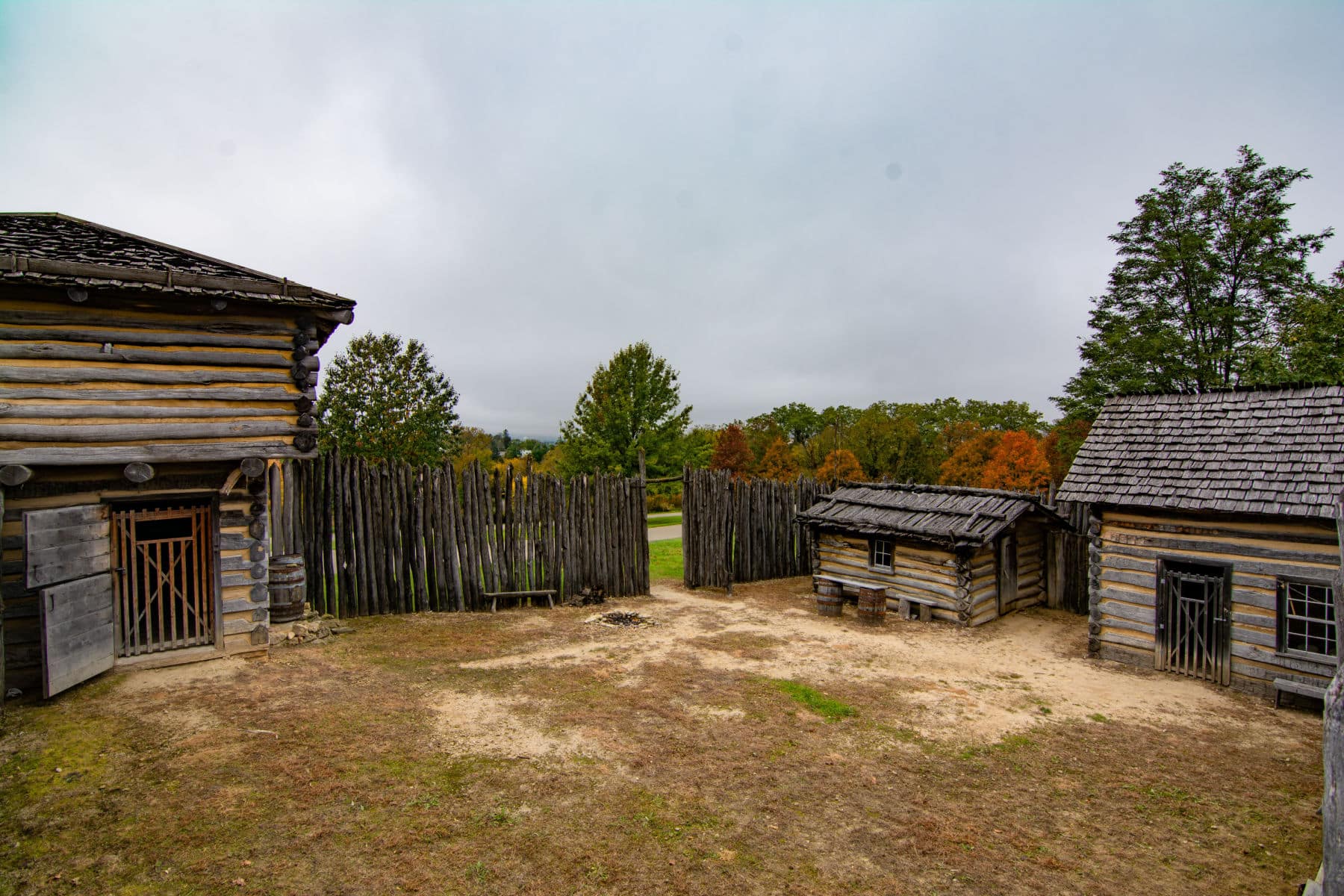
8. Galena Historic District
Our next Illinois landmark features more than 125 unique boutiques, delightful restaurants, and eclectic shops. Many of these shops and restaurants showcase the town’s historic Late Victorian architecture and 19th-century charm.
At #8 on our list of the Best Illinois Landmarks is the Galena Historic District.
Situated in the picturesque Galena River valley, the Galena Historic District covers approximately 85 percent of the town’s original 19th-century commercial and residential buildings. The district’s architectural styles primarily reflect the town’s heyday in the mid-1800s, during the lead mining boom.
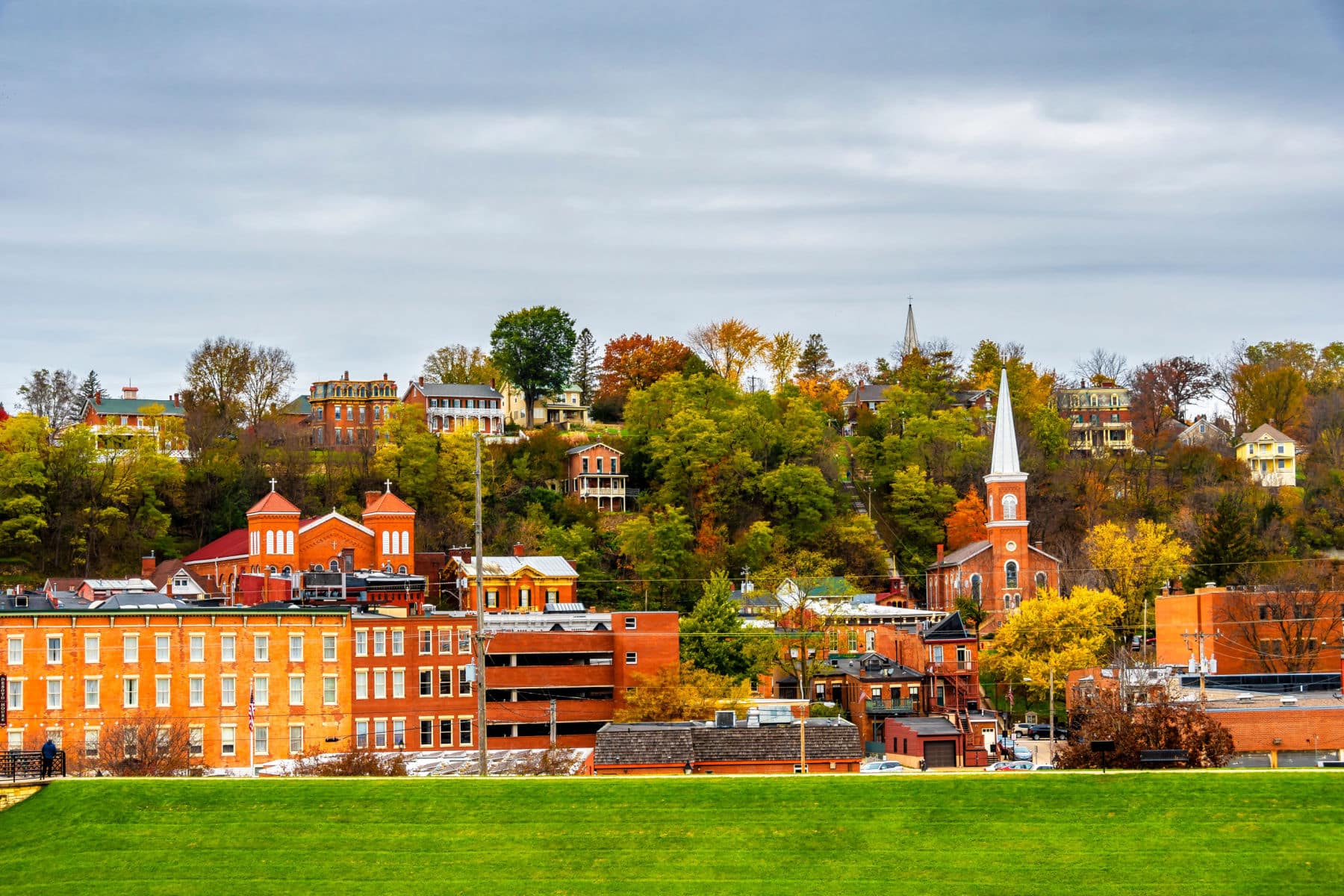
The District Features A Diverse Collection Of Architectural Styles
The district boasts a diverse collection of architectural styles, including Greek Revival, Italianate, Gothic Revival, Federal, and Victorian. The buildings are characterized by their ornate detailing, well-preserved facades, and distinctive features that showcase the craftsmanship of the era. Many of the structures are constructed using locally quarried limestone, adding to the district’s unique charm.
Main Street serves as the heart of the Galena Historic District, lined with beautifully restored buildings that now house a variety of boutiques, art galleries, antique shops, restaurants, and bed and breakfast establishments. Walking along the street, visitors can appreciate the architectural details, browse unique shops, and experience the vibrant atmosphere of the district.
Among the notable buildings in the district is the Old Market House, a Greek Revival structure that served as the center of commerce and government in the mid-19th century. Today, it operates as a museum, providing insights into Galena’s history and serving as a visitor information center.
It Also Features The Ulysses S. Grant Home
Another prominent landmark is the DeSoto House Hotel, one of the oldest operating hotels in Illinois. This grand hotel, dating back to 1855, has hosted several notable figures, including Ulysses S. Grant, Abraham Lincoln, and Mark Twain. Its elegant architecture and historic significance make it a popular attraction within the district.
In addition to its architectural wonders, the Galena Historic District offers various historical sites and museums. The Ulysses S. Grant Home, the former residence of the 18th President of the United States, provides a glimpse into Grant’s life and accomplishments.
The Galena & U.S. Grant Museum, located in a former 19th-century hardware store, showcases Galena’s history, lead mining industry, and the impact of the Civil War.
The district also hosts several events and festivals throughout the year, including art fairs, historical reenactments, and holiday celebrations. These events add to the lively atmosphere and offer visitors a chance to immerse themselves in the local culture.
The Galena Historic District’s preservation efforts and dedication to maintaining its historic charm have earned it recognition on the National Register of Historic Places. It stands as a testament to Galena’s past, providing a captivating glimpse into the town’s vibrant history and serving as a beloved destination for history enthusiasts, architecture lovers, and those seeking a unique and nostalgic experience.
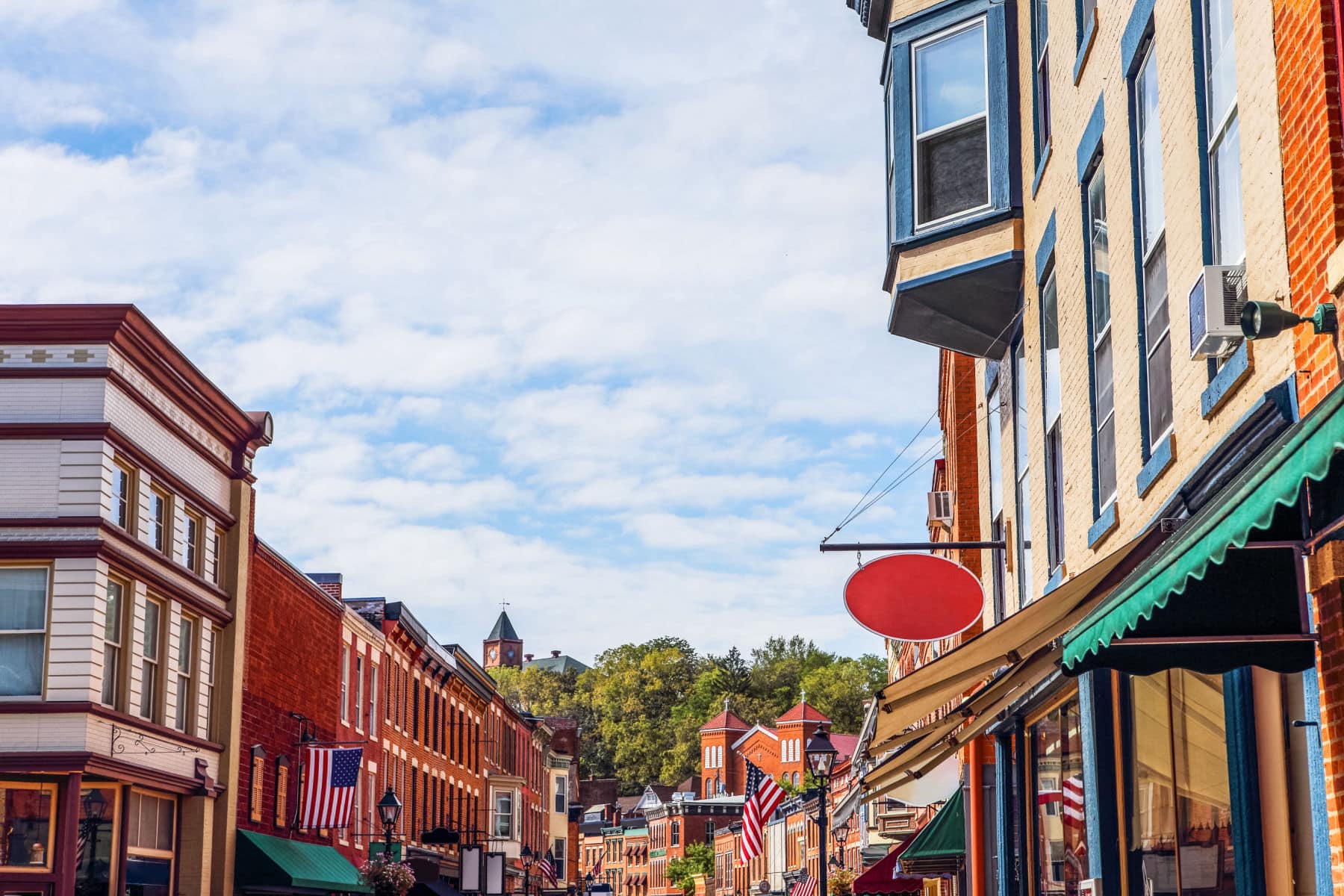
7. Cahokia Mounds
If you’re someone who loves historic sites that go way back then our next one is for you. At #7 on our list of the Best Illinois Landmarks we have the Cahokia Mounds State Historic Site.
Cahokia Mounds State Historic Site preserves the central section of the largest prehistoric Native American city north of Mexico. Occupied from 700 to 1400, the city grew to cover 4,000 acres, with a population of between ten and twenty thousand at its peak around 1100.
The site is dominated by the hundred-foot-tall Monks Mound, the largest prehistoric earthen mound in the Americas, and supported several multiple-mound satellite villages in St. louis, East St. Louis, Mitchell, Dupo, and Lebanon Emerald Mound.
In 1965 Cahokia Mounds was designated a National Historic Landmark and placed on the National Register of Historic Places and in 1966 and in December 1982 was designated a World Heritage Site by UNESCO. (Source: Illinois Dept. of Natural Resources)

6. Hull House Museum
Our next Illinois landmark became not only a cultural center with music, art, and theater offerings, but also a safe haven and a place where the immigrants living on Chicago’s Near West Side could find companionship and support and the assistance they needed for coping with the modern city.
At #6 on our list of the Best Illinois Landmarks is the Hull House Museum.
It’s a historic site and museum located in Chicago, Illinois. It is housed in the Jane Addams Hull-House, which was founded by social reformer Jane Addams and her colleague Ellen Gates Starr in 1889.
The Hull-House was a settlement house that served as a center for social reform and activism, providing a variety of services to immigrants and working-class people in the surrounding neighborhood.
The Hull-House became an important model for social reform and activism, and was instrumental in shaping the modern social work profession.
Today, the Hull House Museum offers visitors a chance to explore the history and legacy of the Hull-House and its impact on American society.
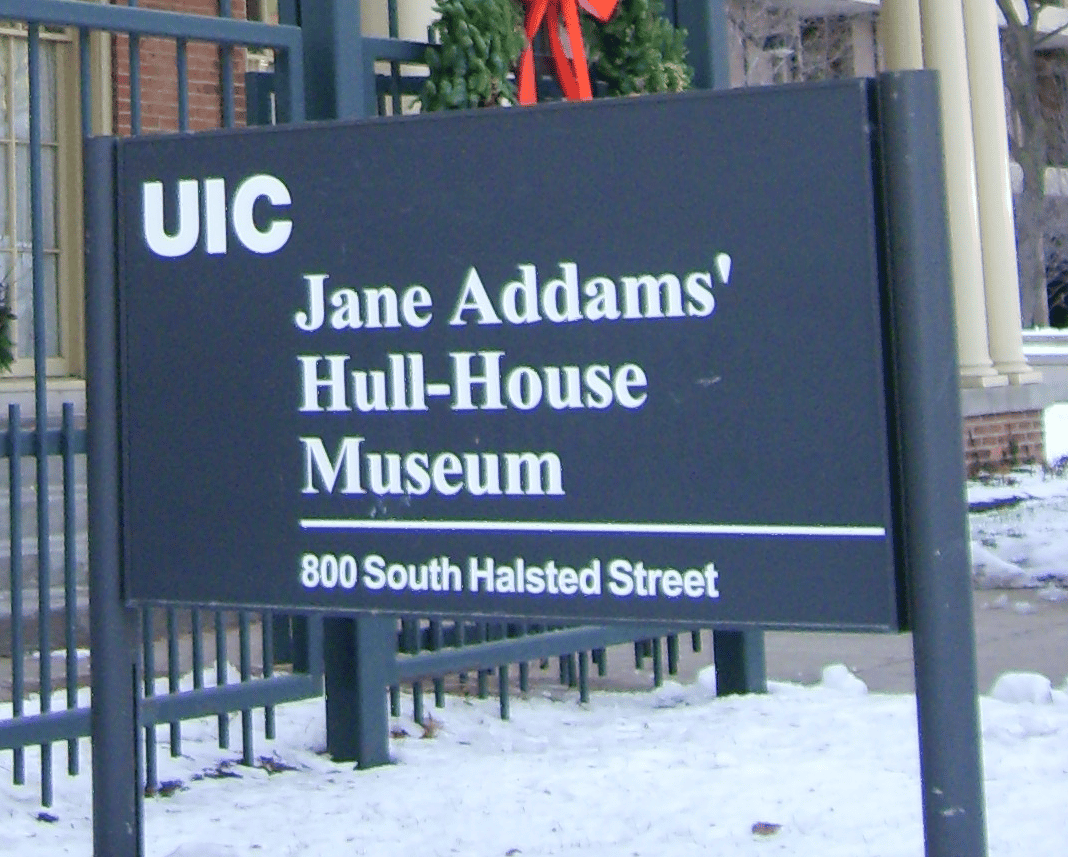
A Place Where Immigrants Could Learn
Hull House offered residences, as well as a place where immigrants and neighbors could commune, learn, share and acquire the tools that would help them put down roots in their new country.
There were kindergarten and day care facilities for the children of working mothers; an employment bureau; an art gallery; libraries; English and citizenship classes; theater, music and art classes; cooking, sewing and technical skills; and American government classes. (Source: Jane Addams Hull House Association)
Jane Addams was the second woman to receive the Nobel Peace Prize.
If you’re interested in learning more about this amazing woman than I recommend reading Jane Addams: Twenty Years at Hull-House by Jane Addams.
Things To Do At Hull House
The Museum consists of two buildings: the Hull Home, which features exhibitions about the history of Hull-House, and the Residents’ Dining Hall, which holds an event space, the Museum’s gift shop, and staff offices.
Hull House Museum connects the histories of the Hull-House Settlement to present-day social justice issues. Exhibitions and public programs highlight histories of activism, progressive education and democratic principles of participation and exchange.
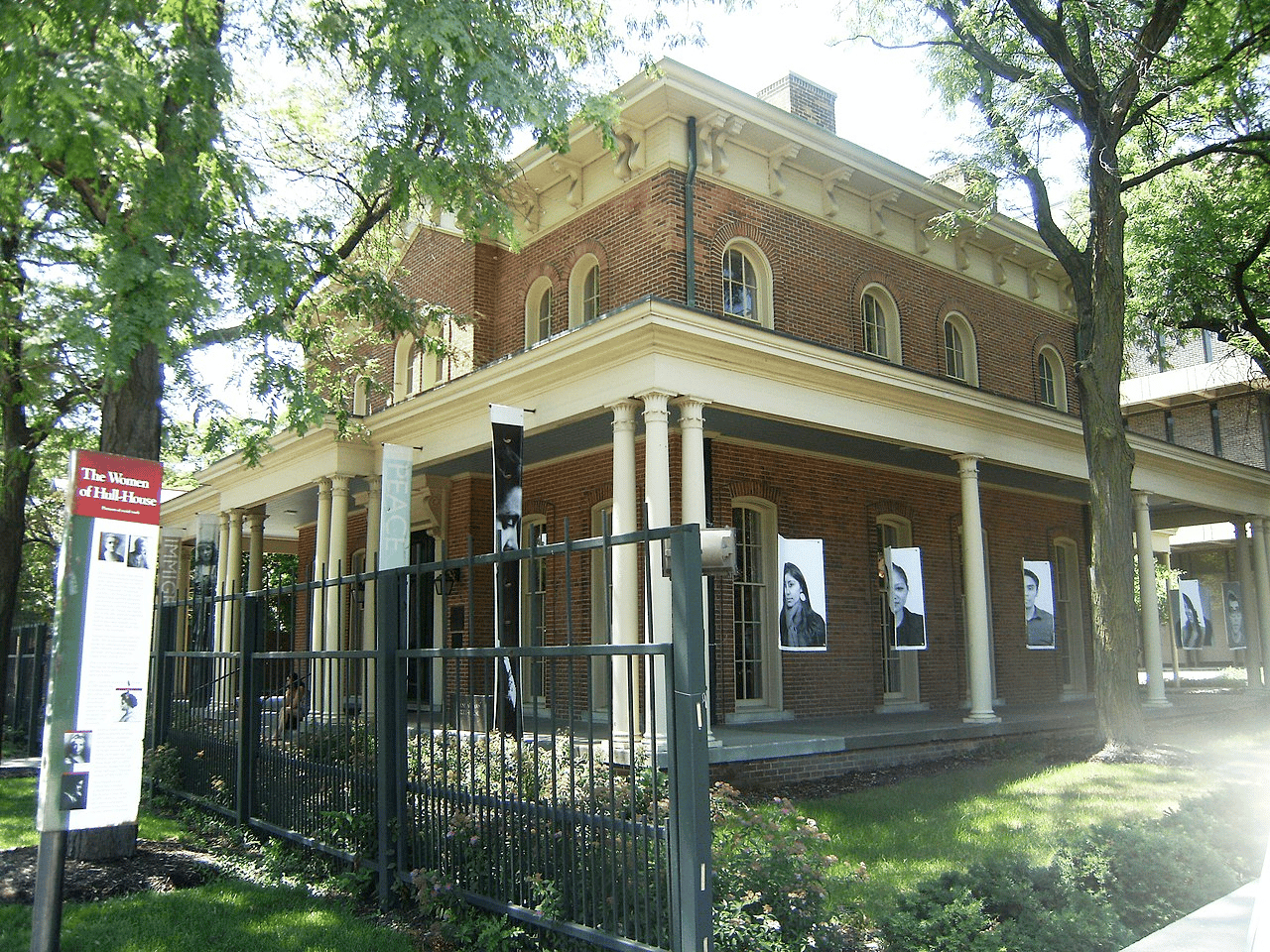
Top 5 Illinois Landmarks
5. Cloud Gate
We’re on to our Top 5 Illinois landmarks. Our next landmark is British artist Anish Kapoor’s first public outdoor work installed in the United States. The 110-ton elliptical sculpture is forged of a seamless series of highly polished stainless steel plates, which reflect Chicago’s famous skyline and the clouds above.
At #5 on our list of the Best Illinois Landmarks is Cloud Gate.
The sculpture was unveiled in 2004 and is made of highly polished stainless steel. Its unique, bean-like shape reflects and distorts the surrounding skyline and landscape, creating a visually captivating experience. Cloud Gate measures 33 feet (10 meters) in height, 66 feet (20 meters) in length, and 42 feet (13 meters) in width, making it an impressive sight to behold.
The surface of Cloud Gate is made up of numerous individual stainless steel plates, seamlessly welded together to create a smooth, mirror-like surface. The reflection of the city skyline and the people around it creates an interactive element, allowing visitors to engage with the artwork and become a part of its ever-changing visual display.
Visitors Can Walk Underneath The Sculpture
Approaching Cloud Gate, visitors can walk underneath the sculpture, where the seamless curves and arches of the structure create an intriguing interplay of light, reflections, and perspectives. Inside, the mirrored surface distorts and elongates the reflections, creating a surreal and dreamlike atmosphere.
Cloud Gate has become an iconic symbol of Chicago, representing the city’s progressive spirit and its embrace of art and culture. It has garnered international acclaim and has been featured in numerous films, photographs, and media representations, solidifying its status as a beloved landmark.
Millennium Park, where Cloud Gate is located, is a vibrant public space that hosts various events, concerts, and festivals throughout the year. The sculpture serves as a focal point within the park, attracting visitors who come to admire its artistic beauty and enjoy the surrounding greenery and other park amenities.
Cloud Gate has not only become a popular tourist attraction but also a gathering place for locals and a source of community pride. It has seamlessly integrated itself into the fabric of the city, representing its diverse and dynamic nature.

Cloud Gate in Chicago | Courtesy of Wikimedia Commons
4. Ulysses S. Grant Home
We’re on to our final four landmarks and they’re all well worth the visit.
At #4 is a site which celebrates the man who took the reins of the beleaguered Union Army during the bloodiest conflict in American history and found a way to win. It’s the Ulysses S. Grant Home.
George Washington was the first victorious general to ascend to the White House. He would be followed by others among them Ulysses S. Grant.
Grant (1822-1885) commanded the victorious Union army during the American Civil War (1861-1865) and served as the 18th U.S. president from 1869 to 1877.
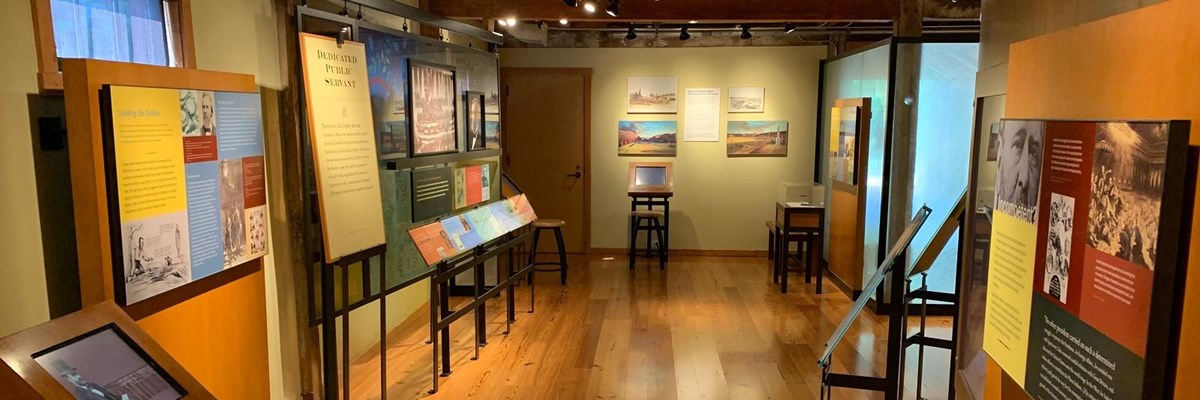
Things To Do
Here are some things to do when visiting the Grant Home:
- Take a guided tour: The Grant Home offers guided tours, which last approximately 30-45 minutes and cover the history of the house, as well as Grant’s life and presidency.
- Explore the grounds: The Grant Home is situated on a beautiful, tree-lined street and features a well-manicured lawn and garden. Visitors can take a leisurely stroll around the property and enjoy the peaceful surroundings.
- Visit the museum: Adjacent to the Grant Home is a museum that contains artifacts and exhibits related to Grant’s life and presidency. Visitors can learn about Grant’s military career, his time as president, and his personal life.
- Attend special events: The Grant Home hosts special events throughout the year, such as Civil War reenactments and holiday celebrations. Check the calendar of events to see what’s happening during your visit.
- Shop in the gift shop: The Grant Home has a gift shop that offers a variety of souvenirs, books, and other items related to Grant and the Civil War.
- Learn about Galena: The Grant Home is located in the charming town of Galena, which is known for its historic architecture and charming downtown area. Visitors can explore the town’s shops, restaurants, and other attractions.
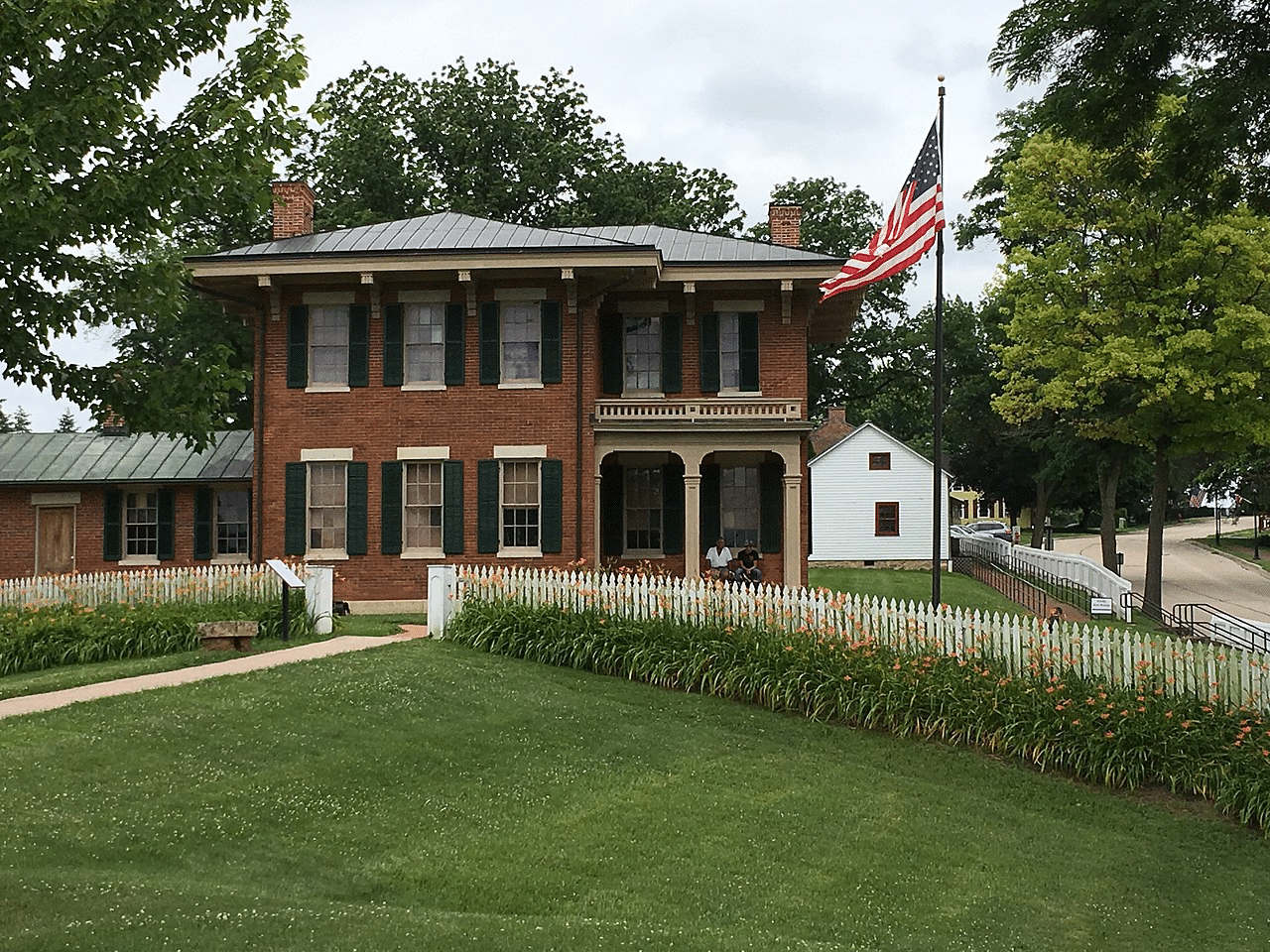
3. Abraham Lincoln Presidential Library and Museum
Our next Illinois landmark is a showcase for the millions of items housed in its collection devoted to Illinois history and Abraham Lincoln. On any given day, at least 100 of those items are on display. Included in the collection are more than 1,600 documents in Lincoln’s hand.
At #3 on our list of the Best Illinois Landmarks is the Abraham Lincoln Presidential Library and Museum.
The Abraham Lincoln Presidential Library and Museum is a world-class institution dedicated to preserving and celebrating the life and legacy of the 16th President of the United States, Abraham Lincoln. The museum and library are located in Springfield, Illinois, where Lincoln lived for many years and began his political career.
The idea for the Abraham Lincoln Presidential Library and Museum was first proposed in the 1990s as a way to provide a central location for Lincoln’s personal and political papers and artifacts, which had been scattered across various collections and institutions. The project was spearheaded by former Illinois Governor Jim Edgar, who recognized the importance of preserving Lincoln’s legacy for future generations.
Construction on the library and museum began in 1999, and the facility officially opened to the public in 2005. The project cost over $150 million and was funded through a combination of state and private funds.

The Site Features A Vast Collection Of Artifacts & Exhibits
The Abraham Lincoln Presidential Library and Museum features a vast collection of artifacts and exhibits that chronicle Lincoln’s life and legacy, from his humble beginnings in a log cabin in Kentucky to his presidency and tragic assassination.
The museum boasts a wide range of exhibits, including historical documents, photographs, and personal items belonging to Lincoln and his family.
One of the most popular exhibits at the museum is the “Ghosts of the Library” exhibit, which uses holographic technology to bring historical figures to life, allowing visitors to interact with them and learn more about their roles in Lincoln’s life and presidency. Other exhibits explore Lincoln’s military career, his stance on slavery and civil rights, and his role in shaping the modern presidency.
The Abraham Lincoln Presidential Library and Museum also houses one of the largest collections of Lincoln-related documents and artifacts in the world. The library’s collection includes over 52,000 books, 1,100 original manuscripts, and 47,000 historic photographs.
Since its opening, the Abraham Lincoln Presidential Library and Museum has become a popular tourist attraction and a source of pride for the people of Illinois. It has also played a vital role in advancing scholarship and research on Lincoln and his legacy, providing a central location for historians and scholars to study and analyze the documents and artifacts related to Lincoln’s life and presidency.
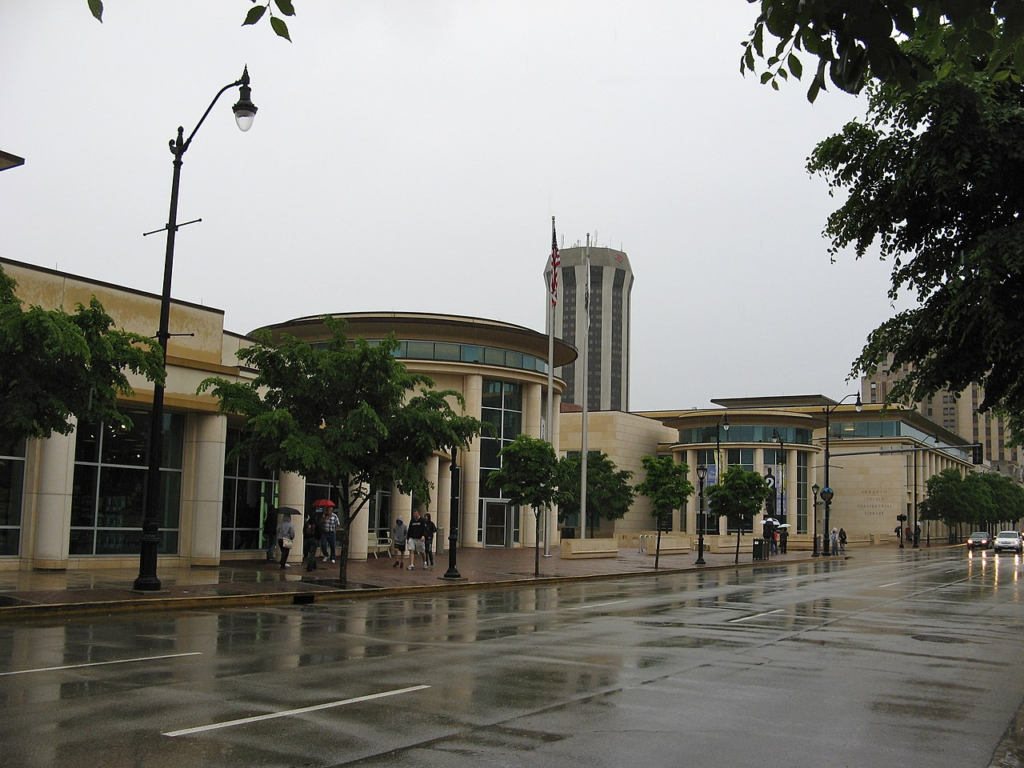
Abraham Lincoln Presidential Library | Courtesy of Wikimedia Commons
2. Pullman National Monument
We’re on to the final two on our list of the Best Illinois Landmarks. In the runner-up position is an incredible site with a truly amazing story to tell. It’s the Pullman National Monument.
To understand the historic significance of this place, however, a short history lesson is in order. But have no fear because we never assign any homework.
The Pullman Strike of 1894 would forever change labor relations in the United States. It began on May 11, 1894, when several thousand train workers started an unannounced strike at the Pullman Company in Illinois.
Over the next few months, dozens of workers would die in strike-related violence, and the President and Supreme Court would finally become involved in the strike’s outcome.

Why Did The Strike Happen?
Why did this strike happen? In 1893, the country was gripped by a severe recession. George Pullman had built a company famous for making railroad cars. He also created a town for his workers in Illinois.
There they enjoyed many amenities but were also financially dependent on the Pullman Company for their homes and utilities.
Pullman made a decision to cut workers wages by 25%. He did not, however, reduce their living costs which meant that workers could no longer afford to provide for their families. This was the event which triggered a monumental clash between labor and management.
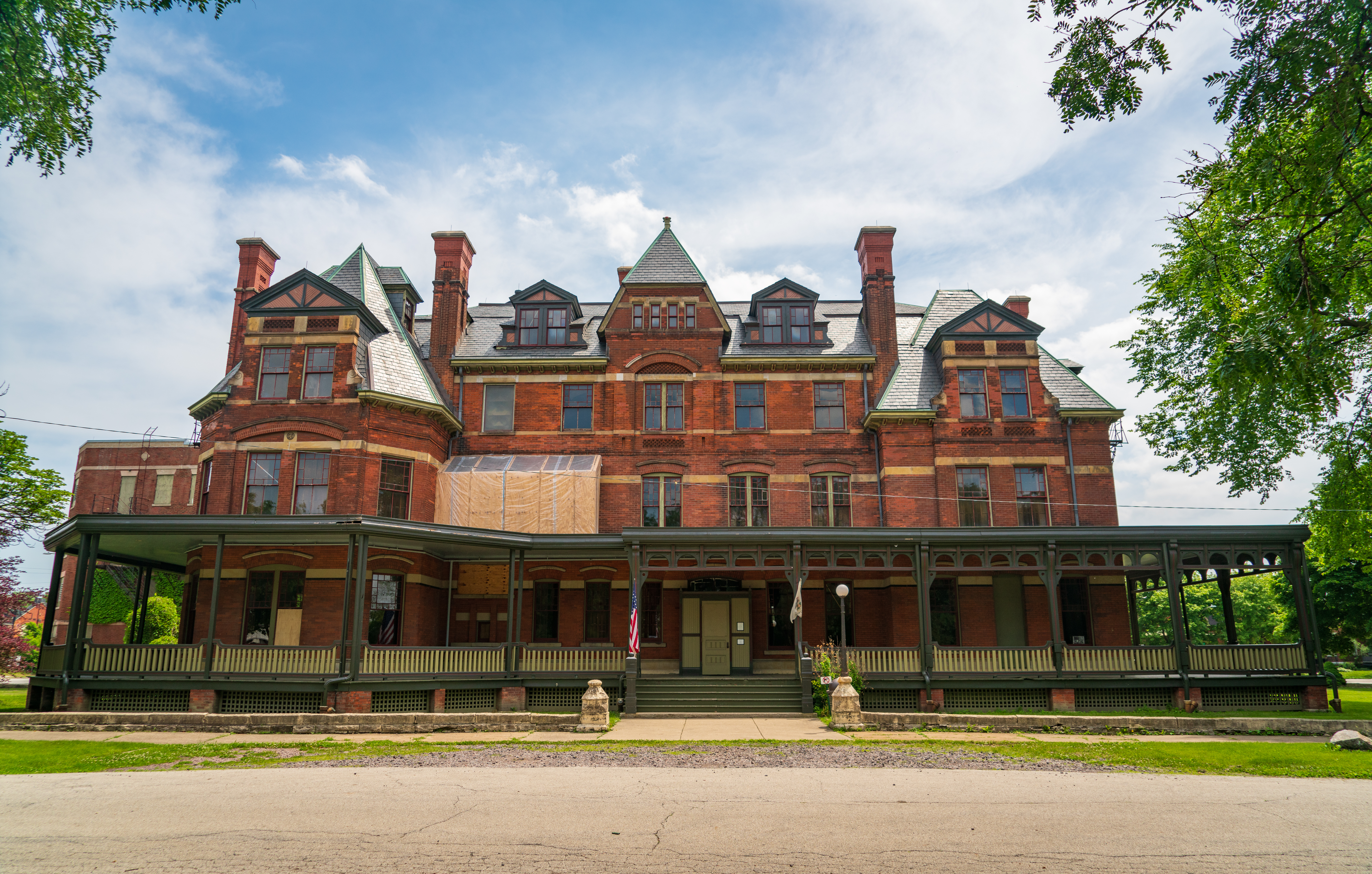
The Federal Government Intervenes In The Pullman Strike
U.S. Attorney General Richard Olney sought an injunction in federal court barring union leaders from supporting the strike. He demanded the strikers cease their activities or face being fired. The Union, led by organizer Eugene V. Debs, ignored the injunction.
President Grover Cleveland ordered the United States Army to get the trains moving again. The arrival of the military and the subsequent deaths of workers in violence led to further outbreaks of violence. During the course of this strike, 30 strikers were killed and 57 were wounded.
In an olive branch to organized labor, President Cleveland and Congress dedicated Labor Day as a federal holiday.
If you’re interested in learning more about this epic event in American history then I recommend a book that is a real page turner. It’s The Edge of Anarchy: The Railroad Barons, the Gilded Age, and the Greatest Labor Uprising in America by Jack Kelly who offers a vivid account of the greatest uprising of working people in American history.

The Labor Organizer Who Wanted To Be President
Eugene Debs was arrested during the Pullman Strike. He was defended by famed criminal defense attorney Clarence Darrow.
Debs, who was a socialist, political activist, and trade unionist, was one of the founding members of the Industrial Workers of the World. He used his notoriety from the Pullman Strike to run for President of the United States as the candidate of the Socialist Party of America–five times.
“I am opposing a social order in which it is possible for one man who does absolutely nothing that is useful to amass a fortune of hundreds of millions of dollars, while millions of men and women who work all the days of their lives secure barely enough for a wretched existence.”
-Eugene V. Debs
Things To Do
Here are some things to do when visiting the Pullman National Monument:
- Take a tour of the historic Pullman district: The Pullman district is a historic residential area that was built in the late 19th century to house workers at the Pullman Company. You can take a guided tour of the district to see the beautiful architecture and learn about its history.
- Visit the Visitor Center: The Pullman National Monument has a Visitor Center where you can learn about the history of the Pullman Company and the significance of the site. The center also has exhibits and displays that showcase the company’s contributions to the development of the United States.
- Explore the factory site: The Pullman Company’s factory site is located within the national monument, and you can explore it to see the remains of the factory buildings, including the clock tower and power house.
- Walk through the Pullman Palace Car Company Administration Building: This building is located within the historic district and is one of the most well-preserved buildings from the Pullman Company era. You can take a guided tour to learn about its history and architecture.
- Attend a ranger-led program: The Pullman National Monument offers ranger-led programs that include guided tours, talks, and workshops. These programs provide a deeper understanding of the history and significance of the site.
- Go on a bike ride or hike: The Pullman National Monument has several trails and bike paths that you can explore to see the natural beauty of the area. The monument is also part of the larger Chicago Lakefront Trail system.
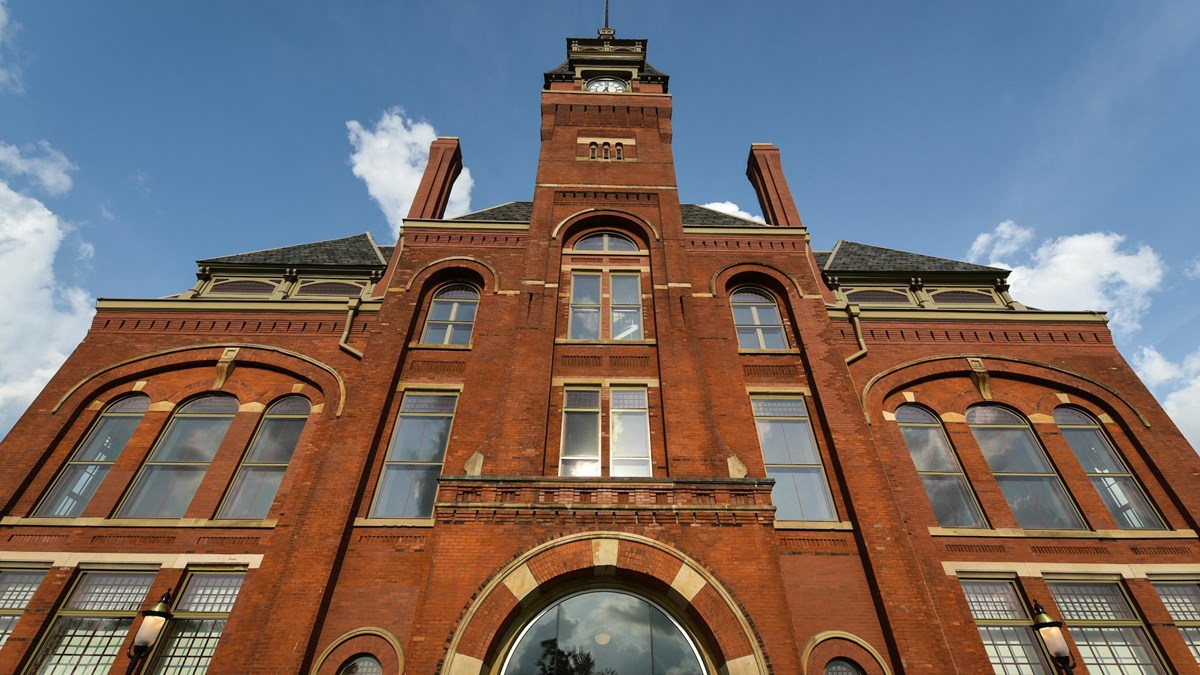
1. Lincoln Home National Historic Site
We’ve saved the best for last! Illinois is known as the “Land of Lincoln” so was there ever any doubt as to which site More Than Just Parks would select for the #1 spot? It’s the Lincoln Home National Historic Site.
In 2021, C-SPAN asked a group of distinguished presidential historians to rank our nation’s presidents from worst to best.
At the top of their list, with a total score of 897 points, was Abraham Lincoln. George Washington and Franklin Roosevelt came in second and third respectively.
Why is Abraham Lincoln considered the greatest president of all time? Simply put, he saved the Union.
n the process of saving the nation, Lincoln managed to define the creation of a more perfect Union in terms of liberty and economic equality that rallied the citizenry behind him.

Lincoln Transformed The Presidency
Lincoln transformed the Presidency. He remade the president’s role as commander in chief and as chief executive into a powerful new position. In the process, he imbued the office with broader powers by making it supreme over both Congress and the courts.
His detractors argued then and now that he took actions which were unconstitutional such as suspending the writ of habeas corpus.
For Lincoln, however, it made no sense “to lose the nation and yet preserve the Constitution.” No President in American history ever faced a greater crisis and, in saving the Union, no President ever accomplished as much.
If you’re interested in taking a deeper dive and learning more about America’s greatest president then you cannot do better than Carl Sandburg’s Abraham Lincoln: The Prairie Years and The War Years. Sandburg won the coveted Pulitzer Prize for his monumental work on America’s 16th President.

Visit The Home Of America’s Greatest Leader
Visitors can take a guided tour of the Lincoln Home. You can step back in time and see how Abraham Lincoln as a family man and a lawyer.
He lived in this house with his wife and family for 17 years before moving to Washington. And the best news of all is that admission is free.
Before heading to the Lincoln Home, however, I recommend going to the Visitor Center. There you can watch two films. One highlights Abraham Lincoln’s life in Springfield and the other is a virtual tour of the Lincoln Home.
Visitors can also explore a four block historic neighborhood and see various exhibits and displays while learning about the history of the Lincoln’s neighborhood.
If you’re interested in learning more about Abraham Lincoln (and who isn’t) then check out these other popular Lincoln sites in Springfield: the Abraham Lincoln Presidential Library and Museum, Lincoln’s Tomb, the Old State Capitol and the Great Western Depot/Lincoln Depot.
Map Of Illinois Landmarks
List Of Illinois Landmarks
- Lincoln Home National Historic Site
- Pullman National Monument
- Abraham Lincoln Presidential Library and Museum
- Ulysses S. Grant Home
- Cloud Gate
- Hull House Museum
- Cahokia Mounds
- Galena Historic District
- Black Hawk State Historic Site
- Nauvoo Historic District
- George Herbert Jones Laboratory
- Garfield Park Conservatory
- Frank Lloyd Wright Home and Studio
- John C. Flanagan House Museum
- Rock Island Arsenal Museum
- University of Illinois Arboretum
- The Field Museum of Natural History
- DuSable Bridge
- Principia College Historic District
- Old State Capitol
Why Trust Us About Illinois Landmarks?
We’re Jim Pattiz and Will Pattiz, collectively known as the Pattiz Brothers and we absolutely LOVE the national parks.
You should probably know that we don’t just make this stuff up out of thin air. We’ve spent our entire adult lives exploring and filming America’s national parks and public lands.
We’ve worked with the National Park Service, the Department of Interior, USDA, U.S. Forest Service, and more for years creating films on important places and issues. Our work has been featured in leading publications all over the world and even some people outside of our immediate family call us experts on the national parks.
And, in 2018, our father – having spent a lifetime teaching history – joined us so that he could help us to tell the stories behind these amazing places.
Meet The Parks Brothers
We Hope You’ll Follow Our Journey

Our goal here at More Than Just Parks is to share the beauty of America’s national parks and public lands through stunning short films in an effort to get Americans and the world to see the true value in land conservation.
We hope you’ll follow our journey through the parks and help us to keep them the incredible places that they are. If you’re interested in joining the adventure then please sign up below!
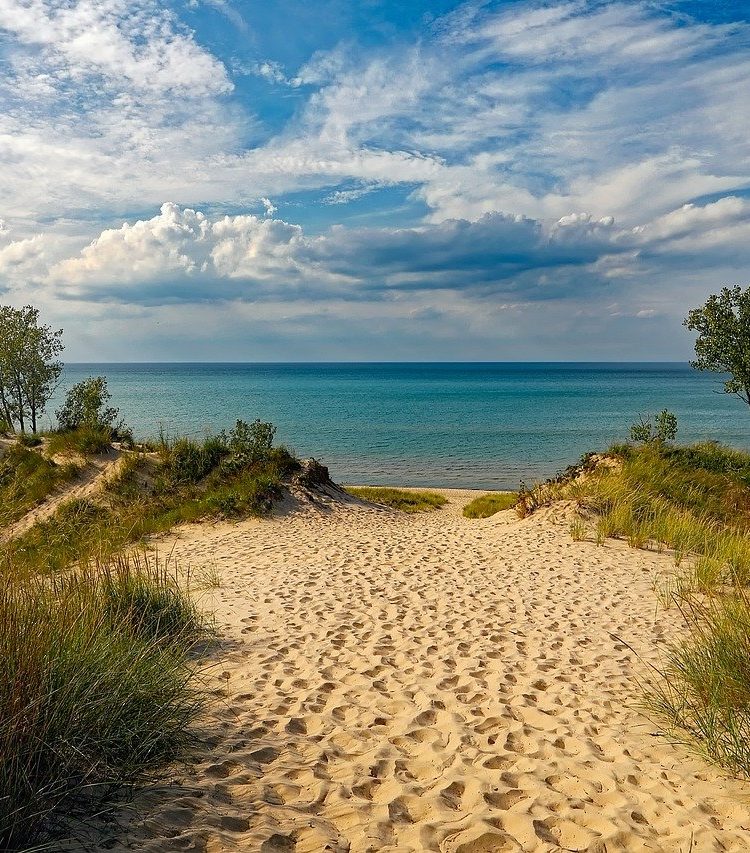

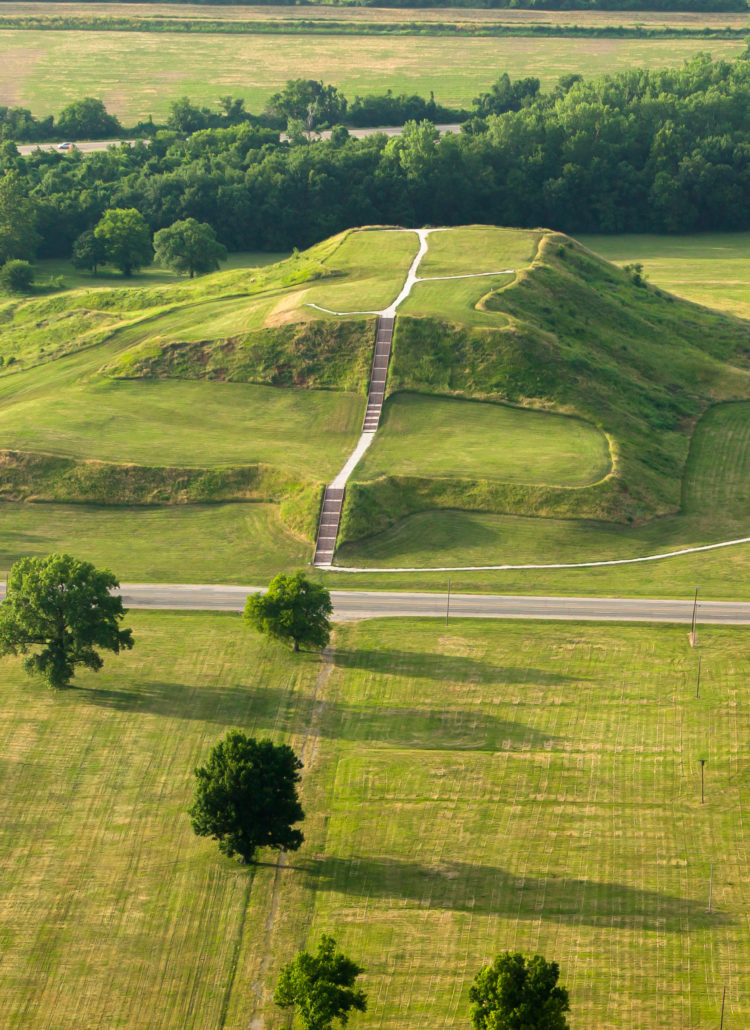


Leave a Reply